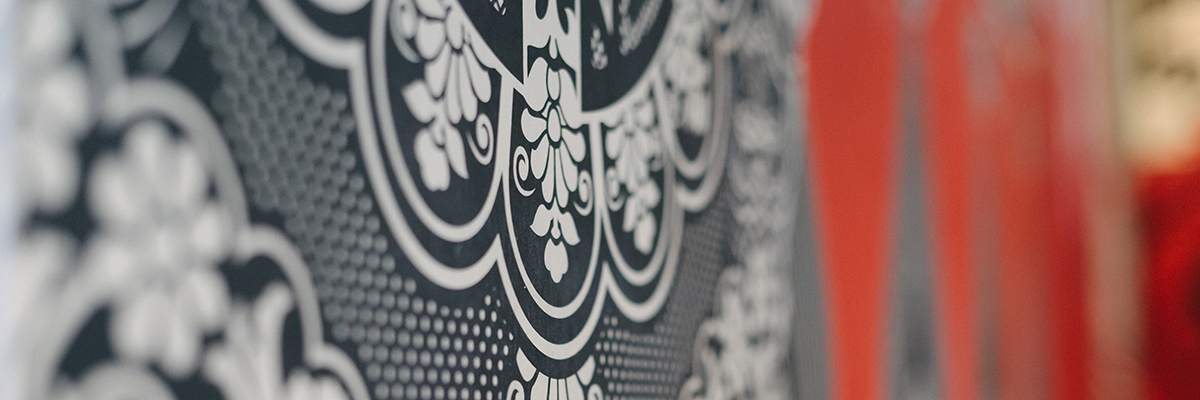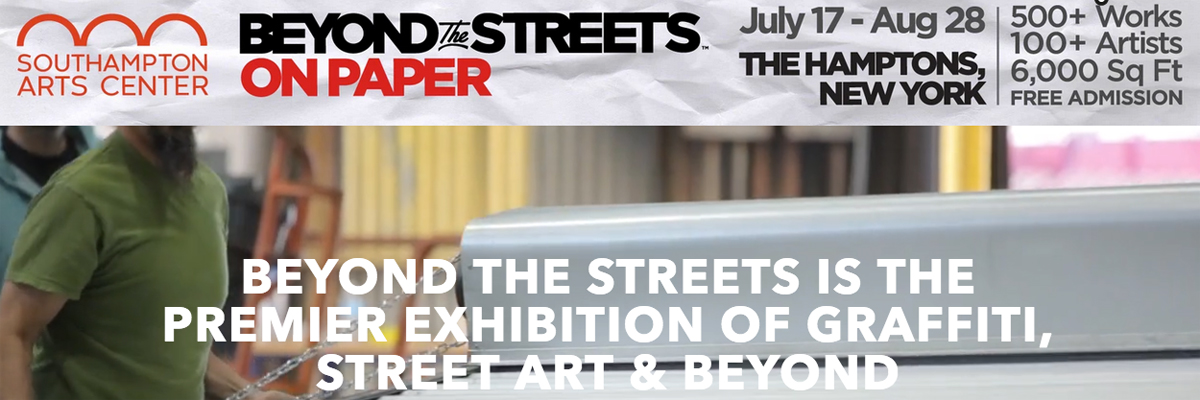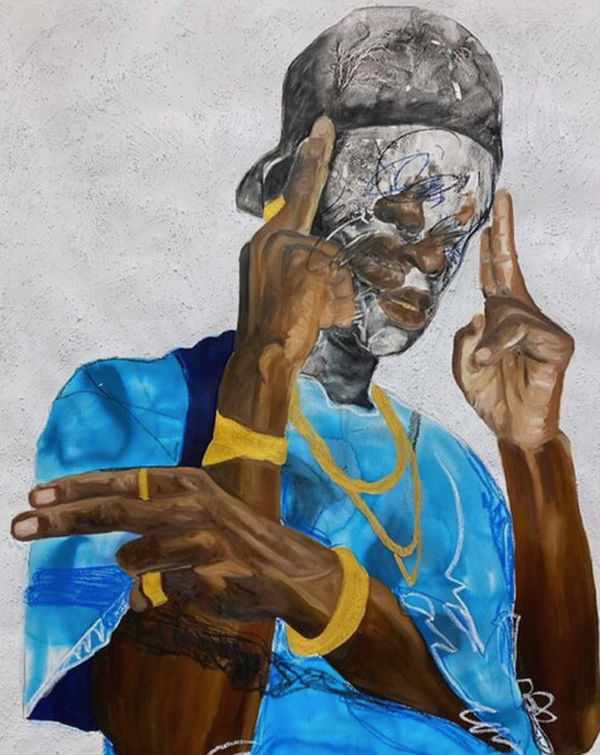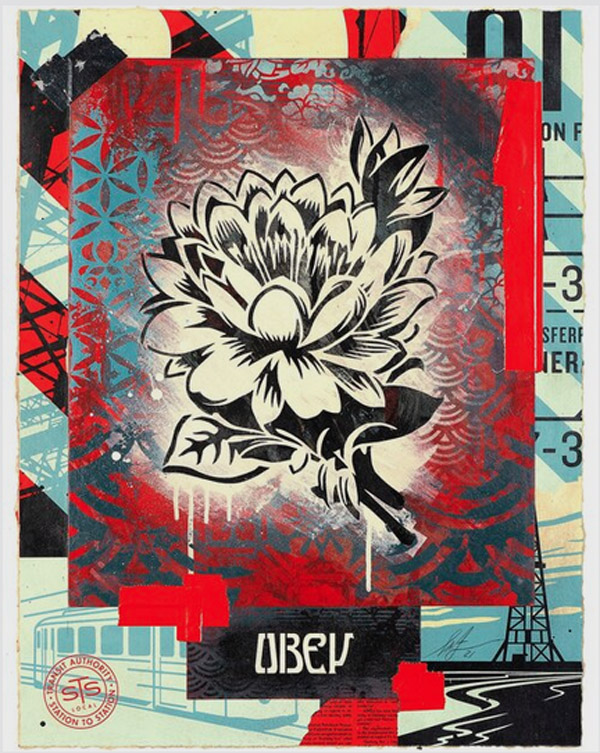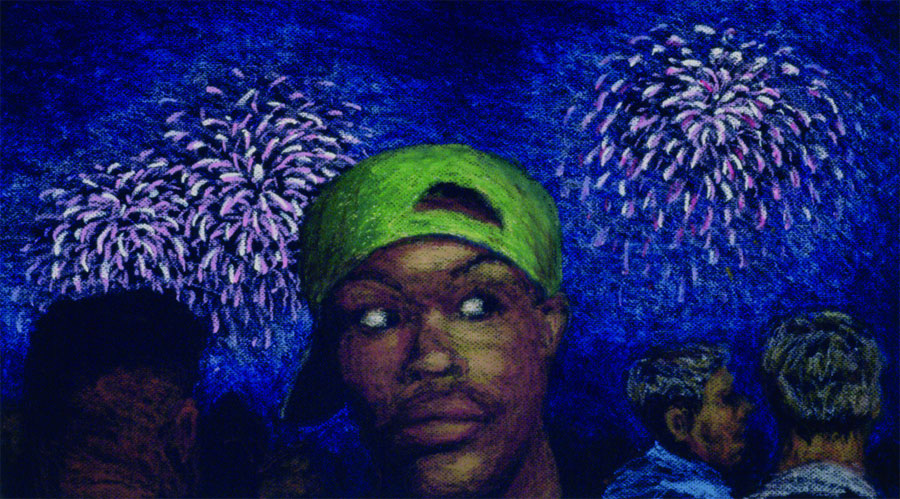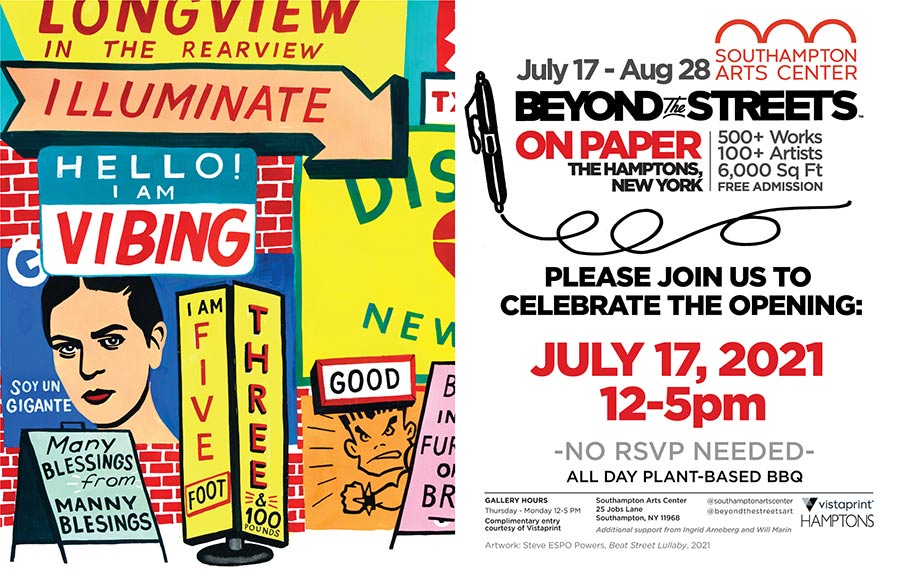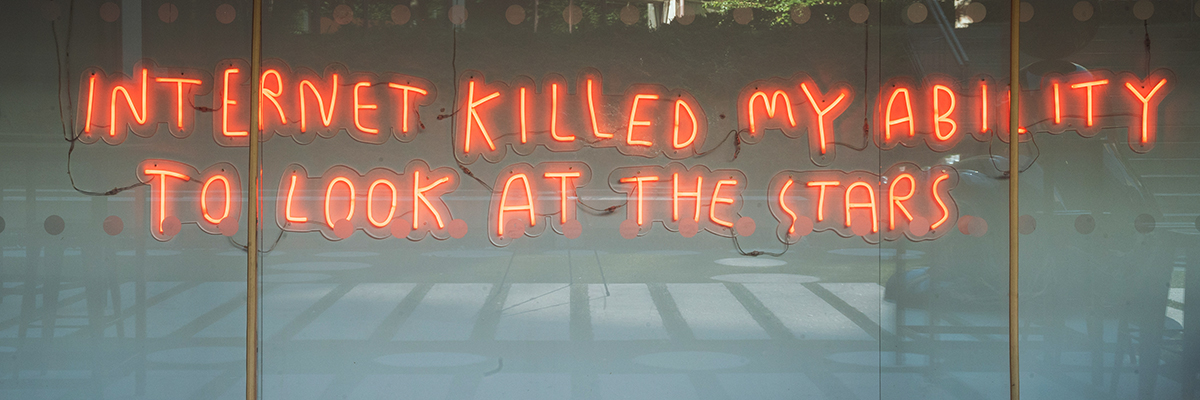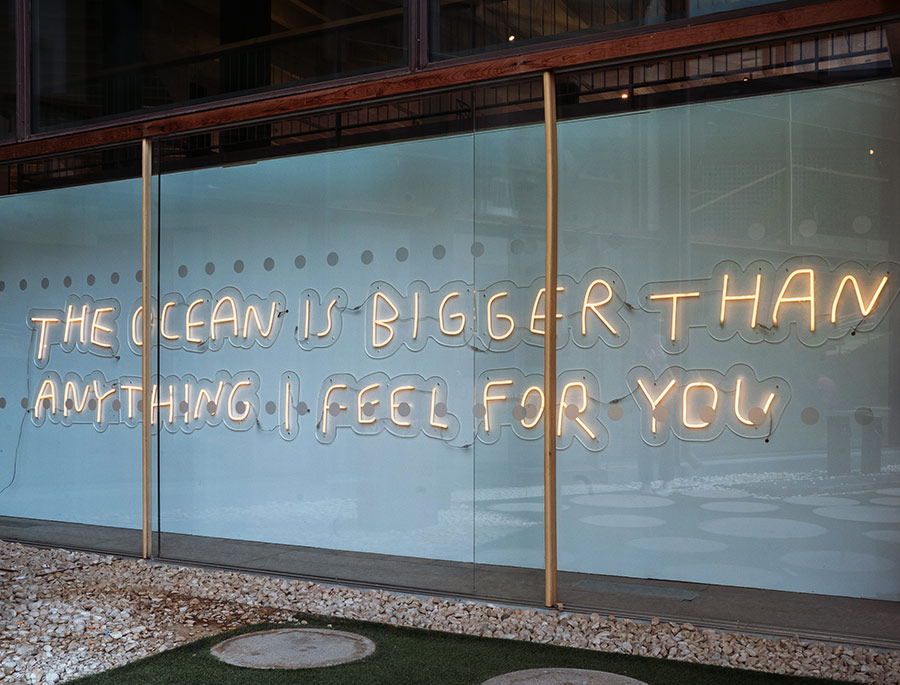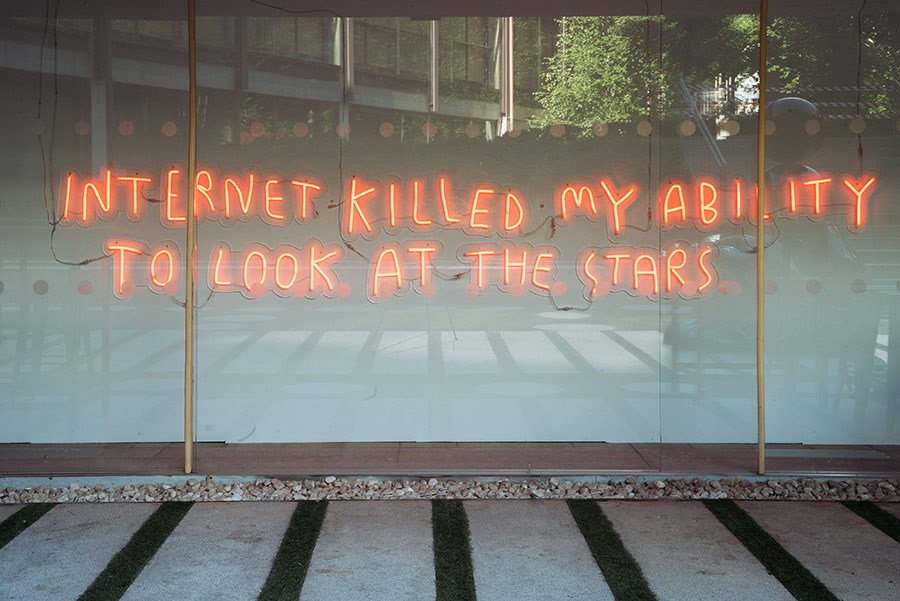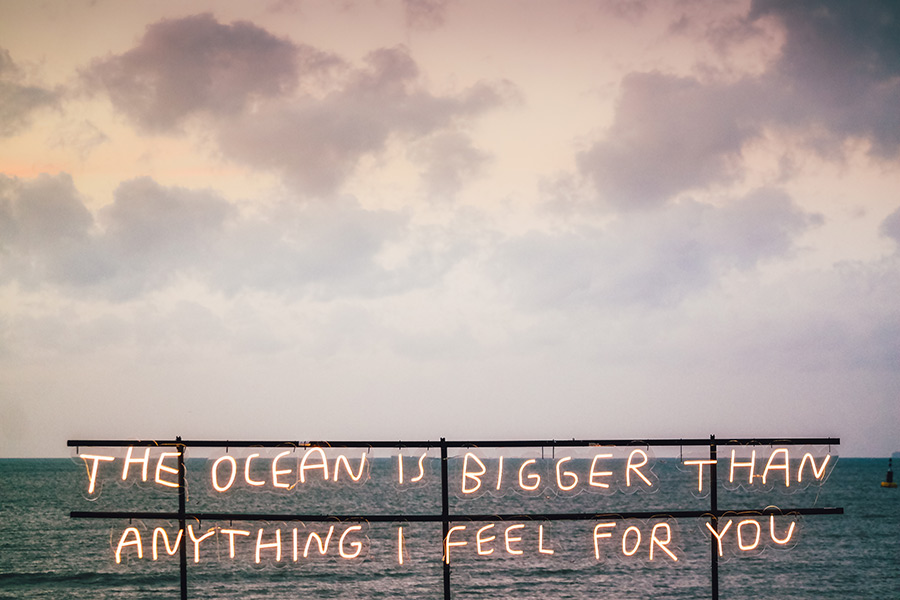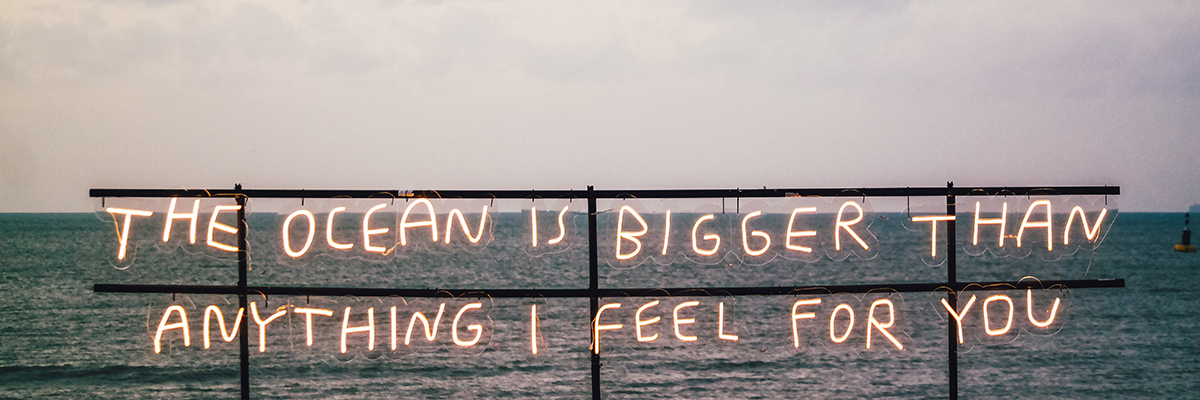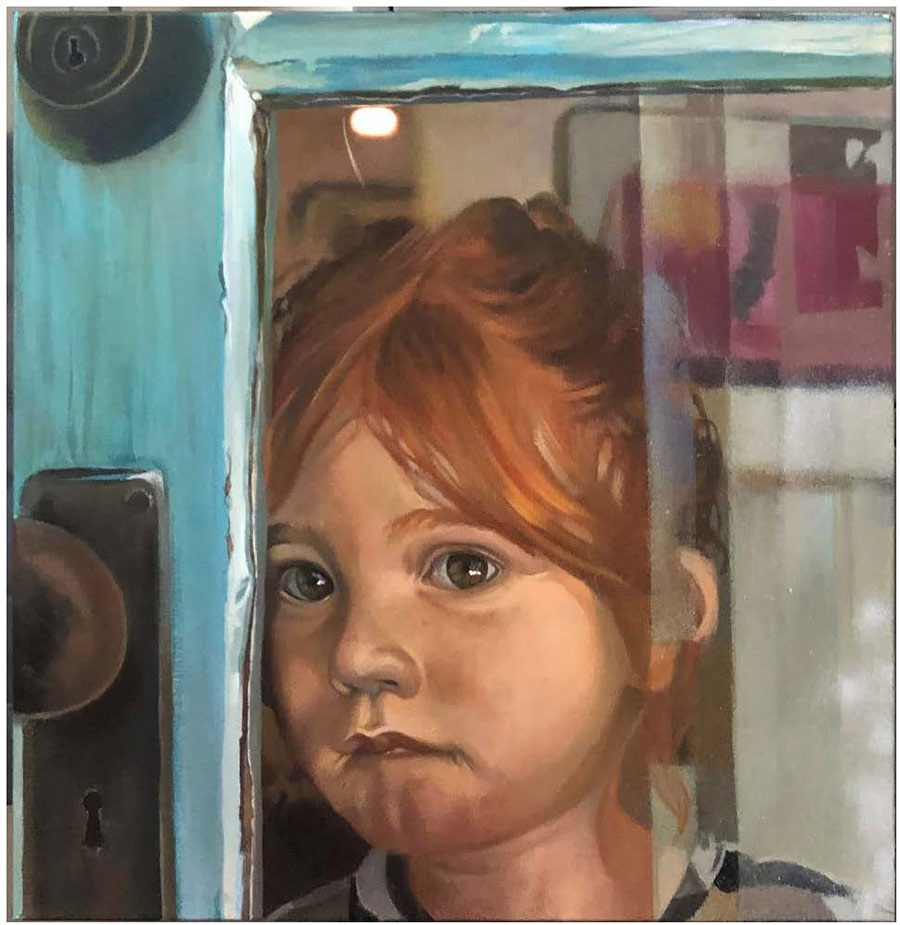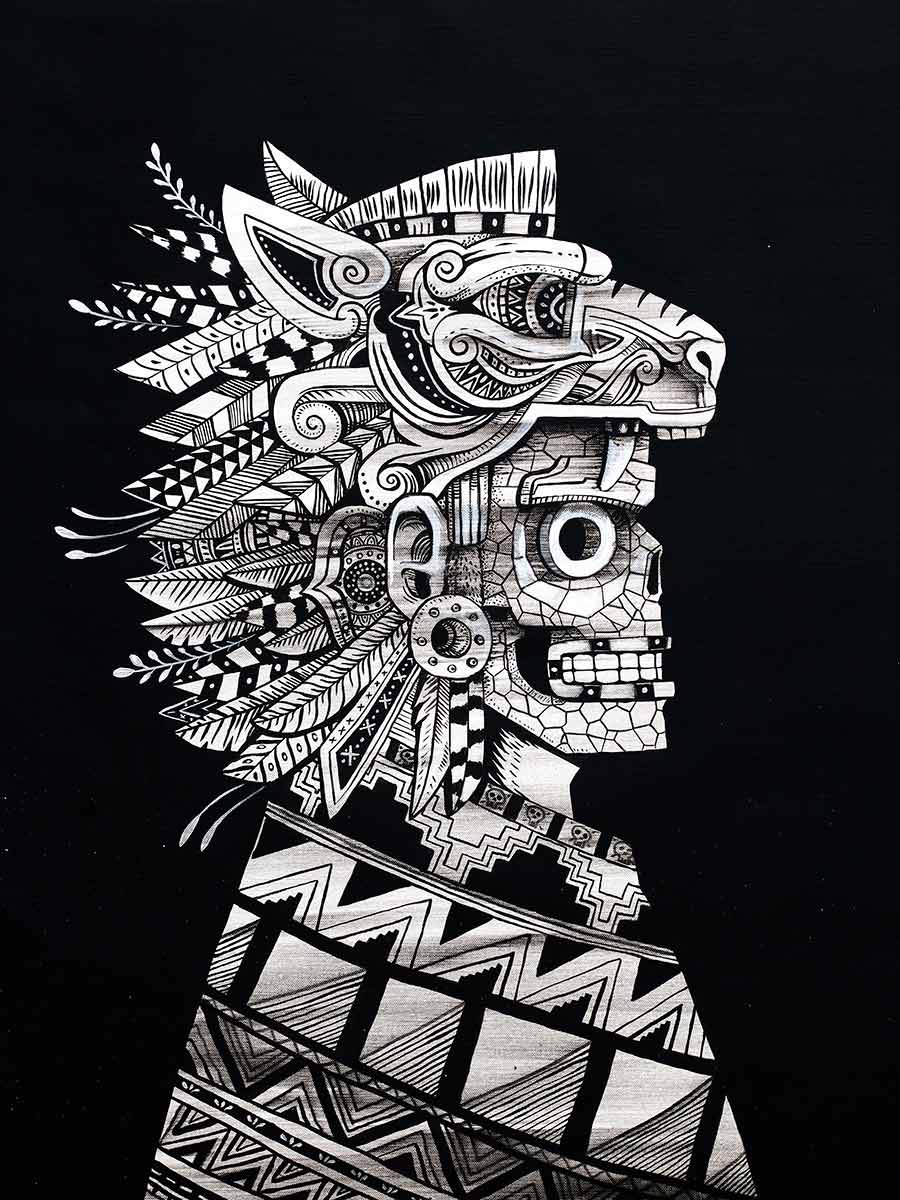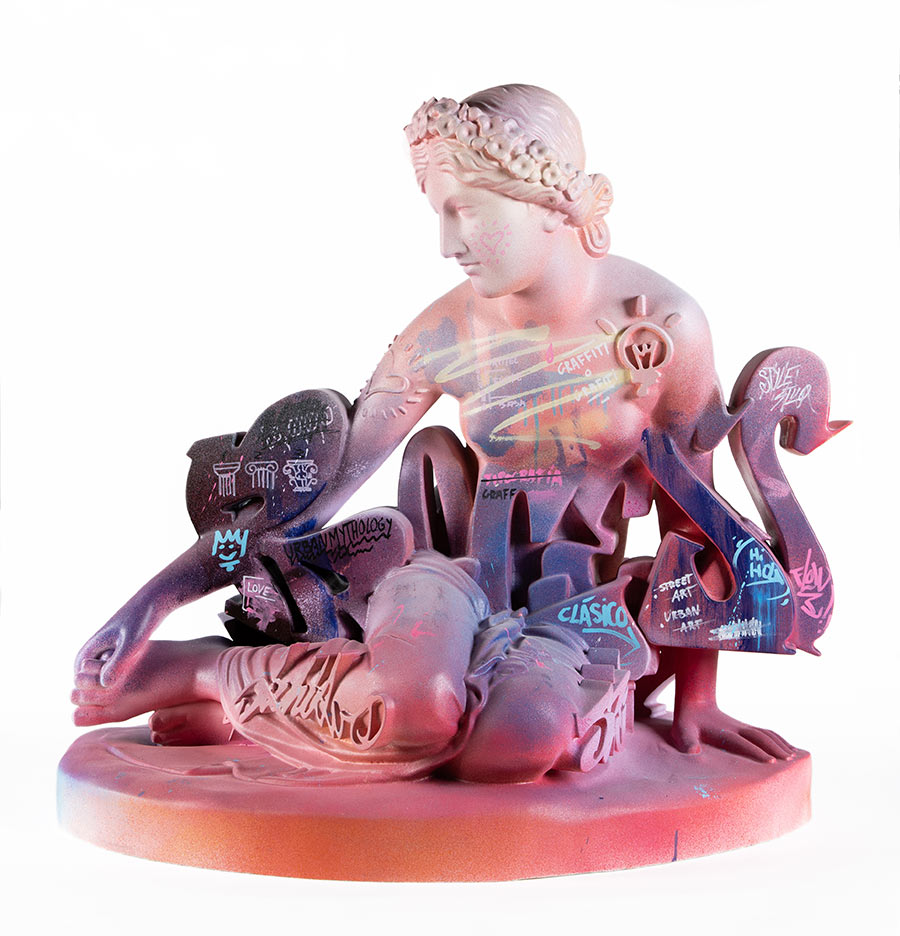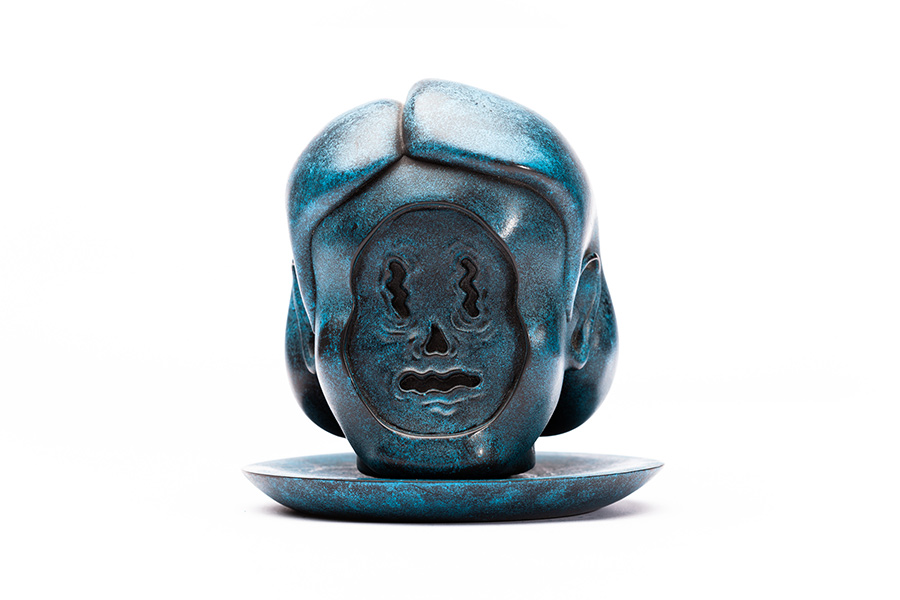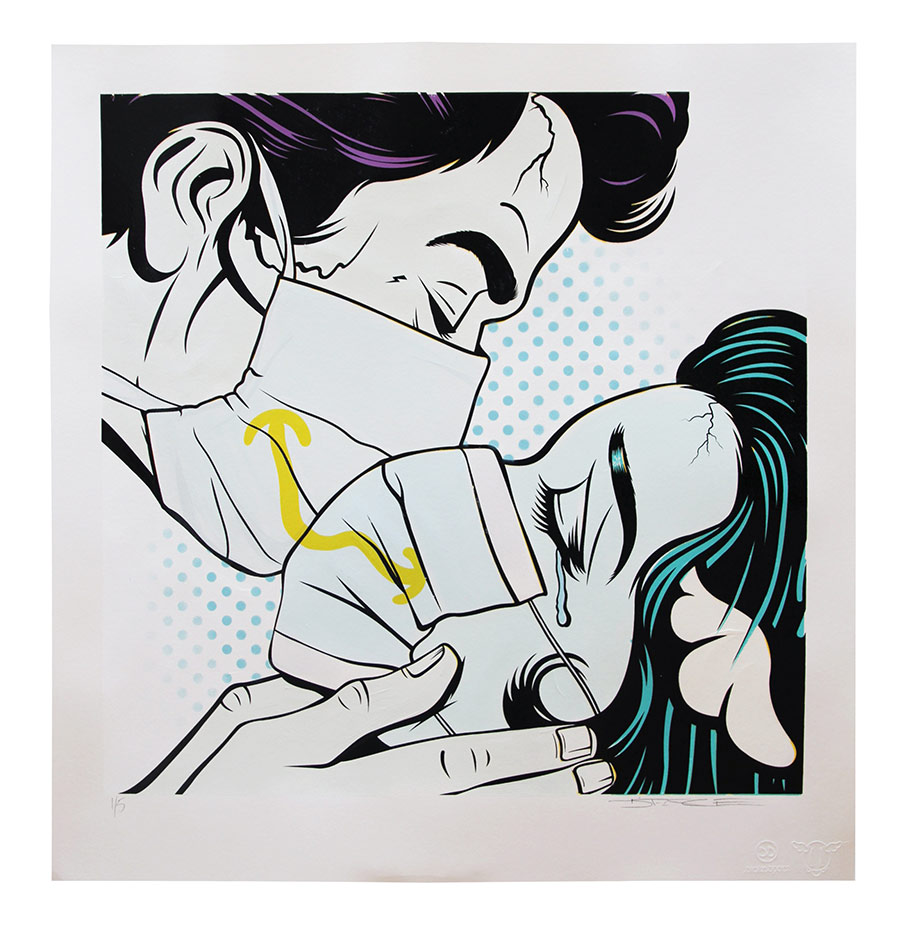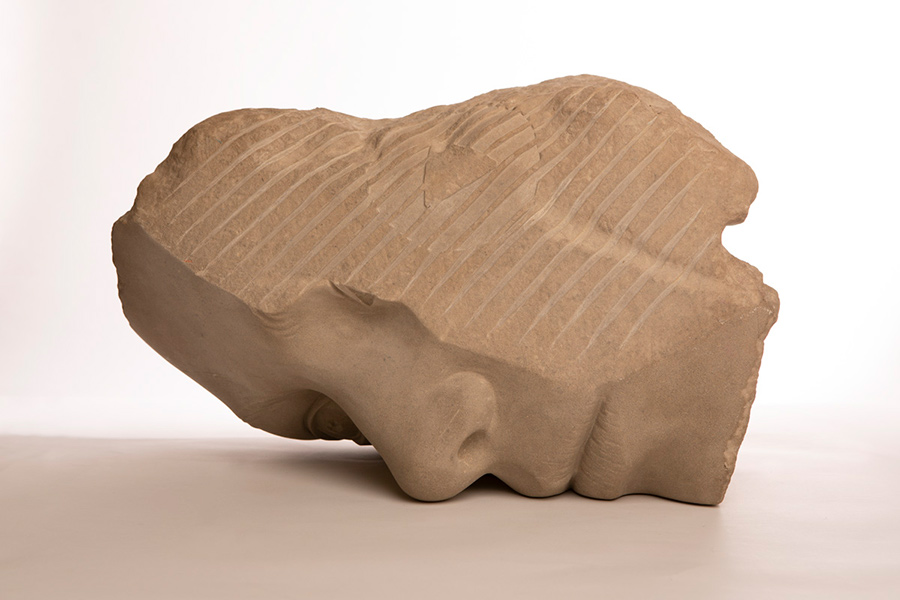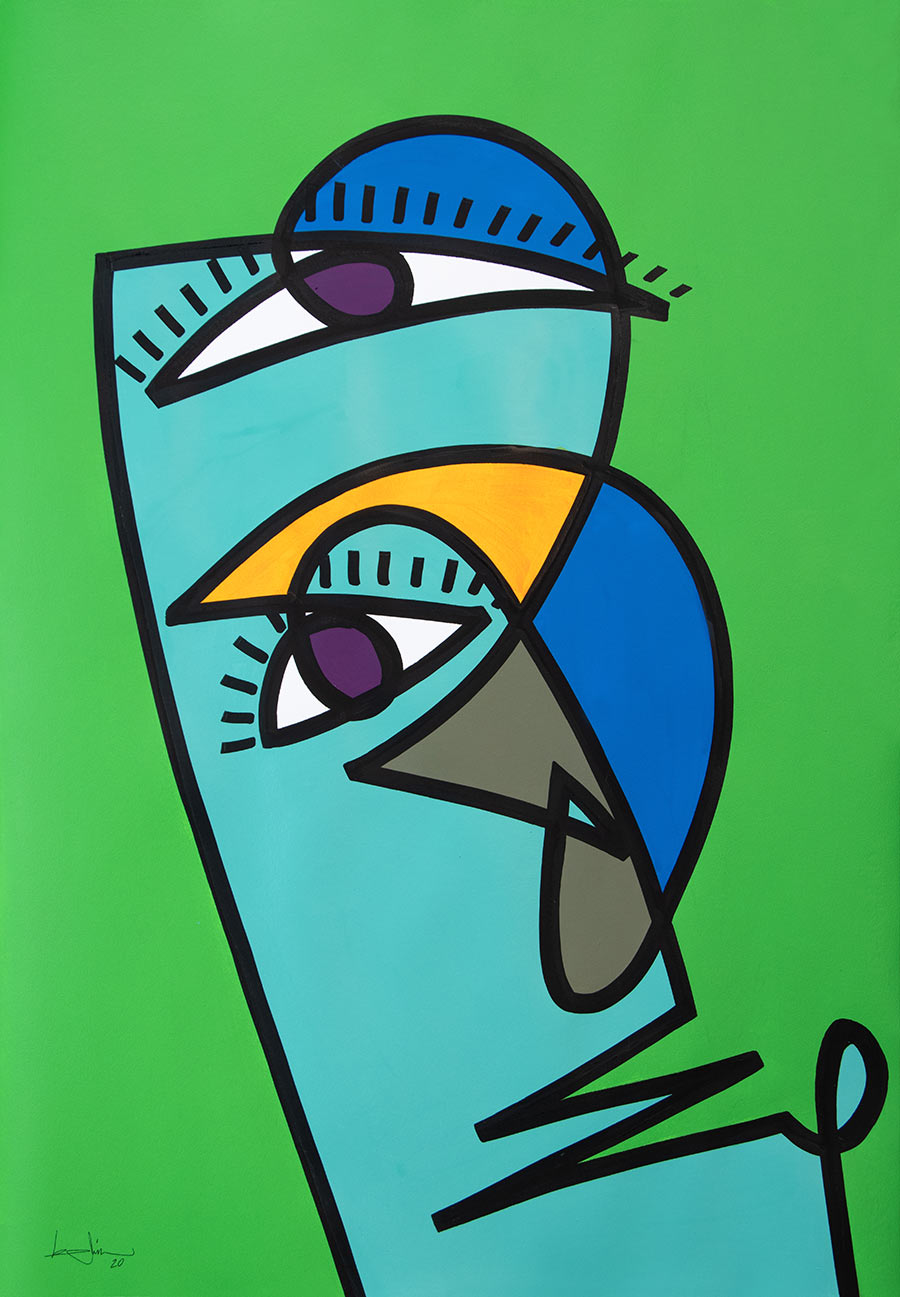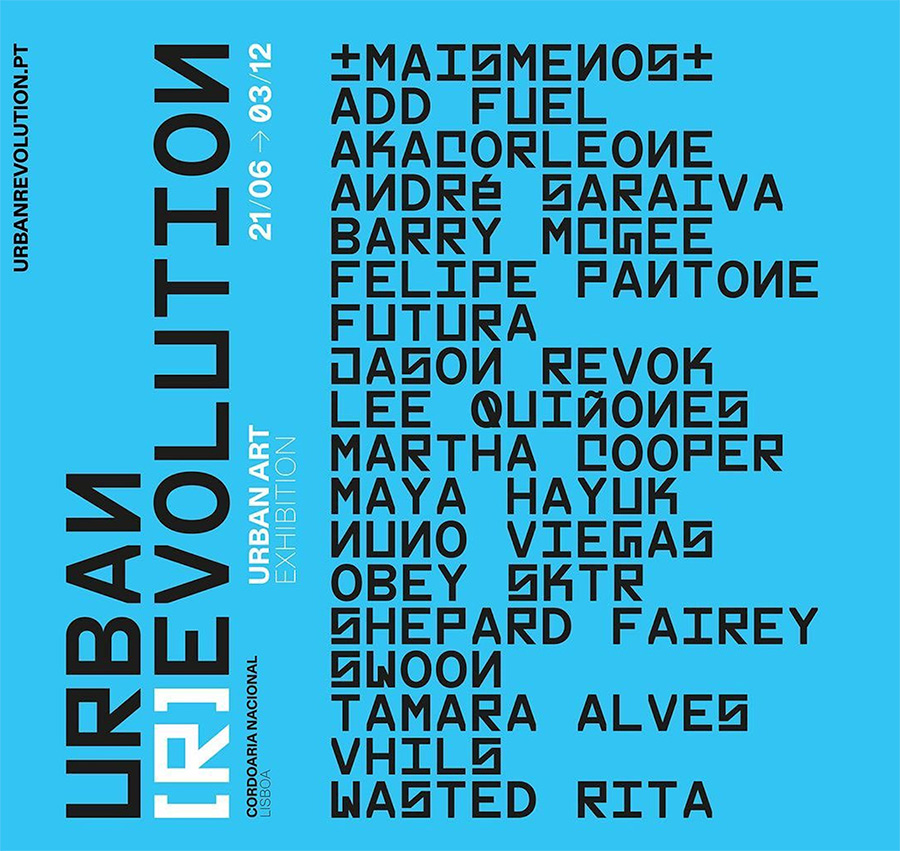
“Urban[R]Evolution: A Journey from Graffiti to Contemporary Art” is a large exhibition that marks the rise and popularity of urban art and features original installations by 18 renowned Portuguese and international artists. Curated by Pauline Foessel and Pedro Alonzo, this showcase takes place at Cordoaria Nacional in Lisbon, running from June 21st to December 3rd.
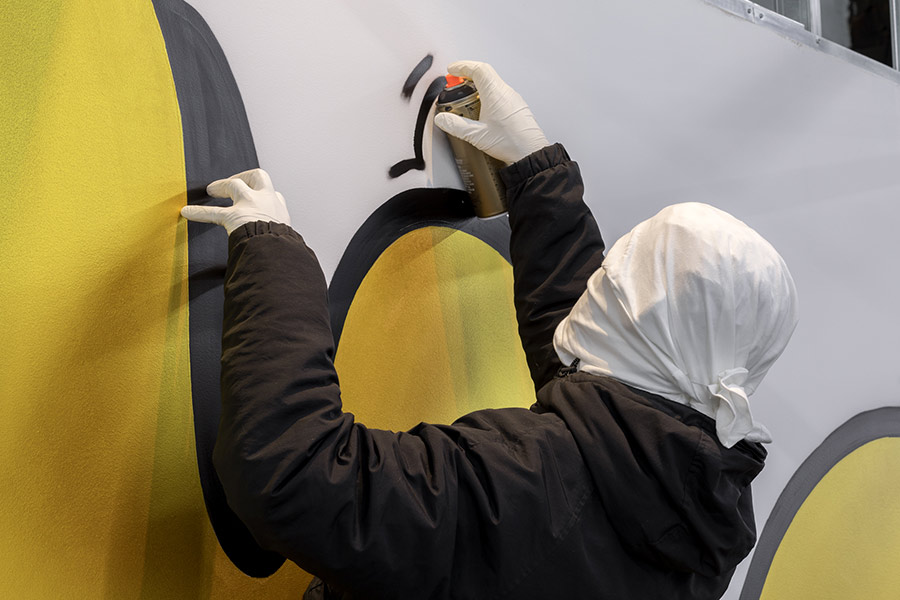
The historic and iconic building that once served as the National Rope Factory during the late 18th century, catering to the needs of the Portuguese Navy by producing ropes for naval purposes, is situated near the scenic Tagus River. With its imposing neoclassical and industrial design, the building stands as a testament to the city’s cultural heritage and is now a versatile venue for hosting events after its meticulous restoration. With free-standing booths carefully built not to endanger the historic structure, the flow of the exhibition offers a pod-like adventure to visitors to experience individual artists’ work and visions. Some utilize the spaces fully with installations, while others choose the homey quality of an artist’s studio with work in progress.
The exhibition brings together a lineup of artists whose work was featured in early graffiti images by photographer Martha Cooper, second-wave western street artists who have burnished their names in the commercial urban contemporary art milieu, and a collection of names more locally known – each with profound ties to the graffiti and street art scene. Among them are esteemed names such as Barry McGee, Futura, Shepard Fairey, Swoon, Vhils, and Obey SKTR, to name a few. The curators thoughtfully selected these artists to narrate the fascinating development of urban art, tracing its origins from early tags, graffiti, and subway pieces to its current expression as street art and mural art.
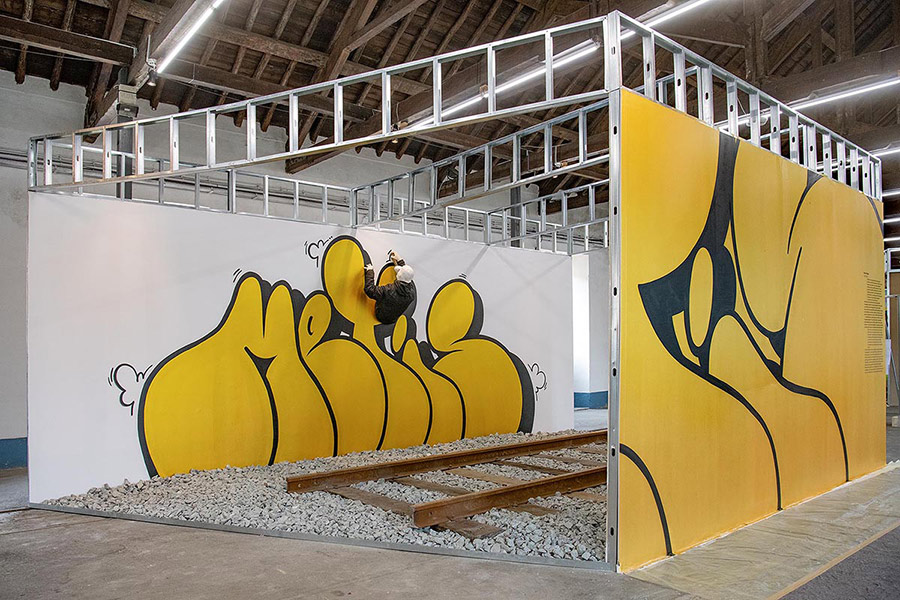
Many of the artists are associated with previous projects of the curators and with one of Lisbon’s anchors of the street art scene, the artist and businessman Vhils. Aside from these connections and the common roots of early graffiti culture, it may be difficult for ticketed visitors to the show to discern the commonalities of the works on display. The connective tissue between the booths will be the many iconic photographs of North American photographer Martha Cooper, whose lens has captured the human experience in urban areas for about 50 years, immortalizing the origins and evolution of graffiti, street art, and urban art – when the scene was viewable directly on the train cars and streets of major cities like New York.
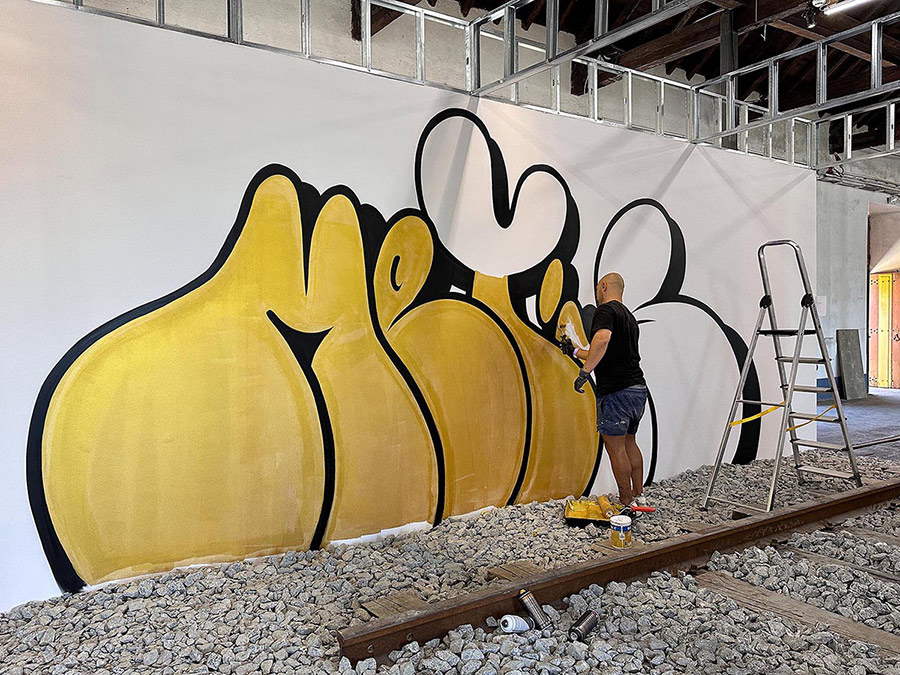
Another nerve center for the show is the installation by conceptual street artist ±MaisMenos± , known for his thought-provoking art pieces and street activations that sublimely challenge social norms and provoke critical thinking. Within this kinetic electronic display, a phalanx of screens emulates a bustling stock trading floor, listing street artists and graffiti artists and their market line charts bumping up and down alongside various commercial, academic, institutional, and cultural influencers and influences that have coalesced to foster their success.
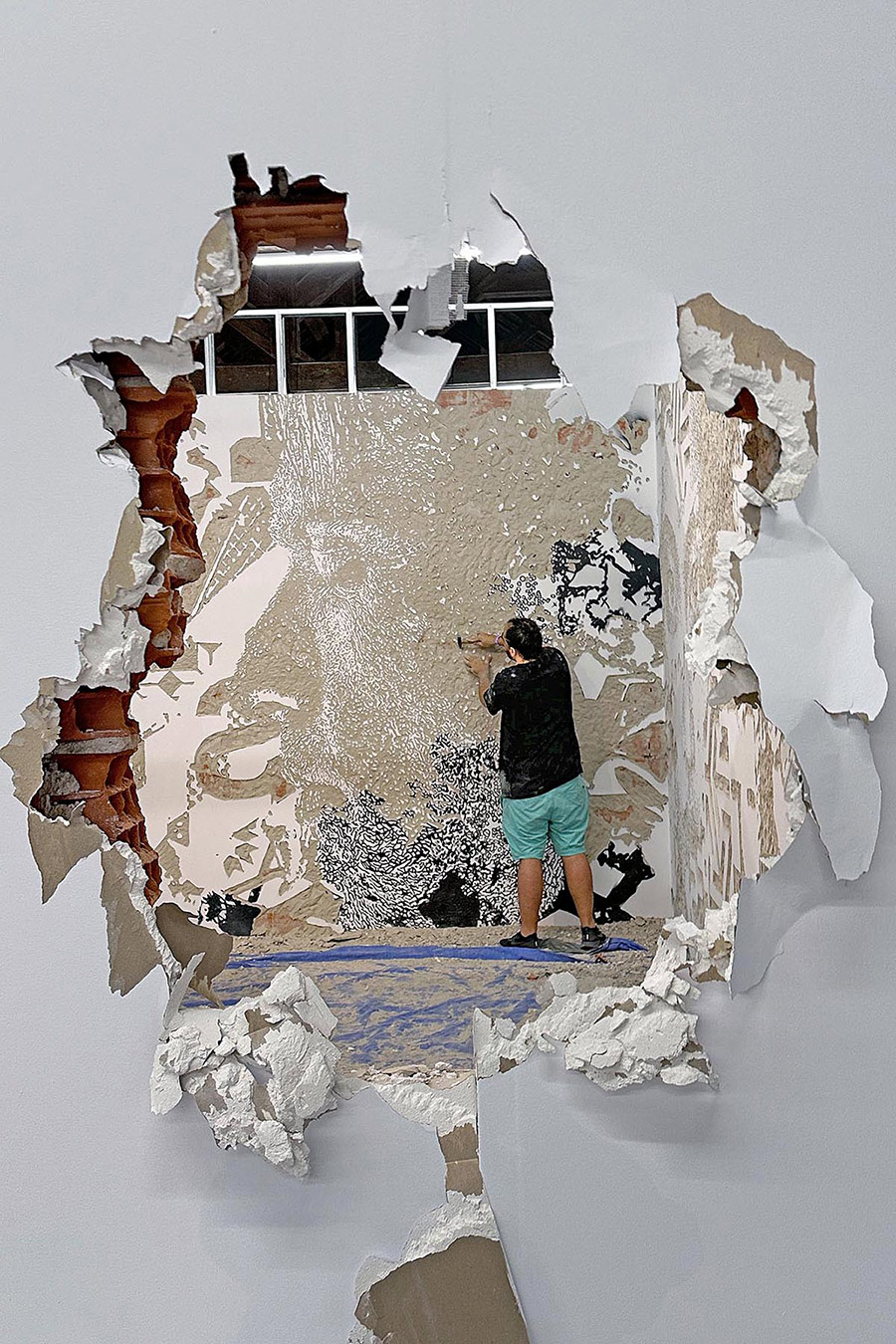
In this exhibition’s composition of artistic expressions, each artist has the opportunity to tell their unique story through their installations and accompanying texts, reflecting on their journey from the streets to the contemporary art world. “Urban[R]Evolution” is a testament to the significance of Lisbon as a vital city for urban art, with the show embracing a dynamic mix of international pioneers and established/emerging talents from Portugal.
This major exhibition, presented by Everything is New and Underdogs Gallery, invites visitors on a dreamlike, poetic, and moving journey, oscillating between light and shadow, the humor and rancor of the street, expressing the heart of urban art’s evolution. It is an immersive experience into urban art’s origins and possible future, exemplifying a sample of the boundless creativity and diverse voices that have emerged from the graffiti and street art scene.
Our sincere thanks to exhibition participant and famed photographer Martha Cooper for sharing here her photos exclusively with Brooklyn Street Art, and to Vasco Vilhena, one of the exhibition’s official photographers.
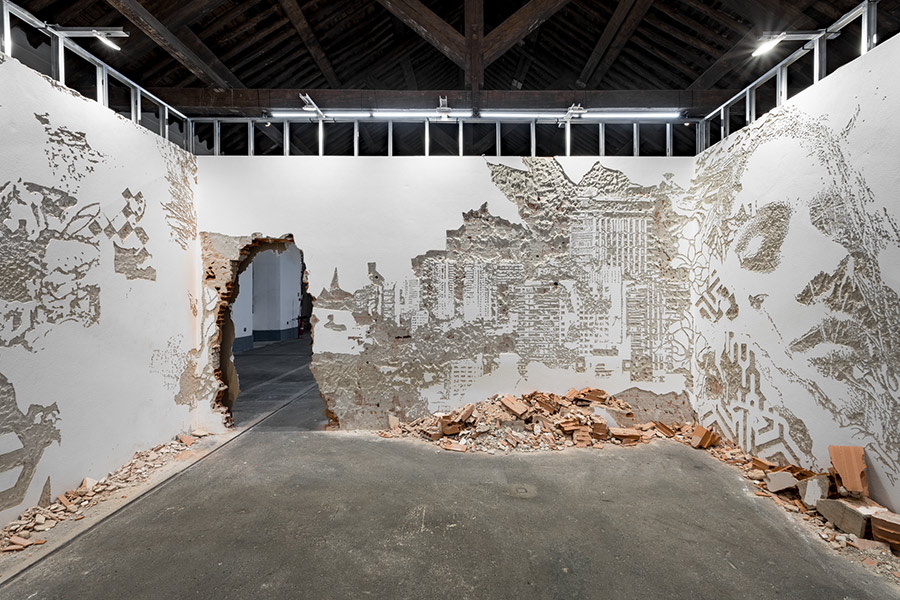
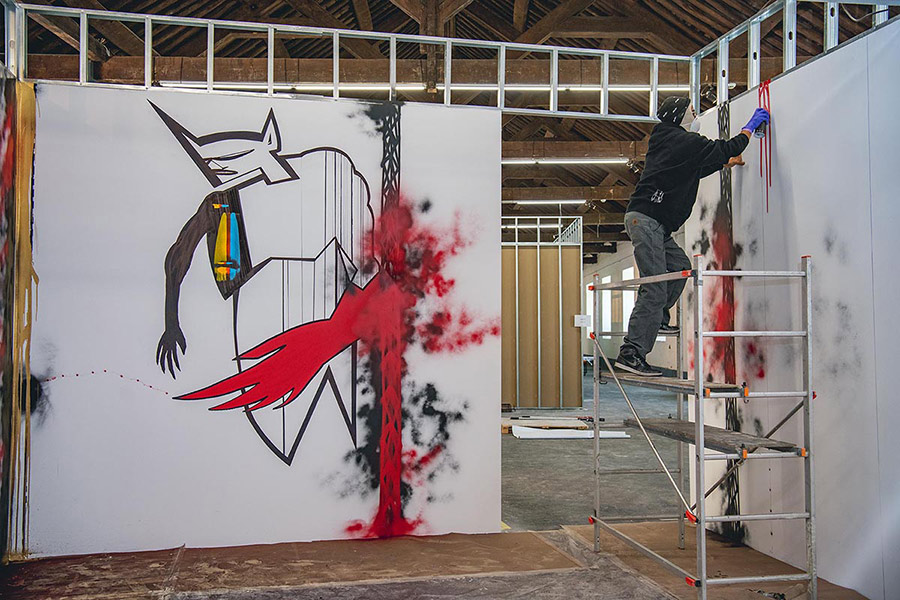
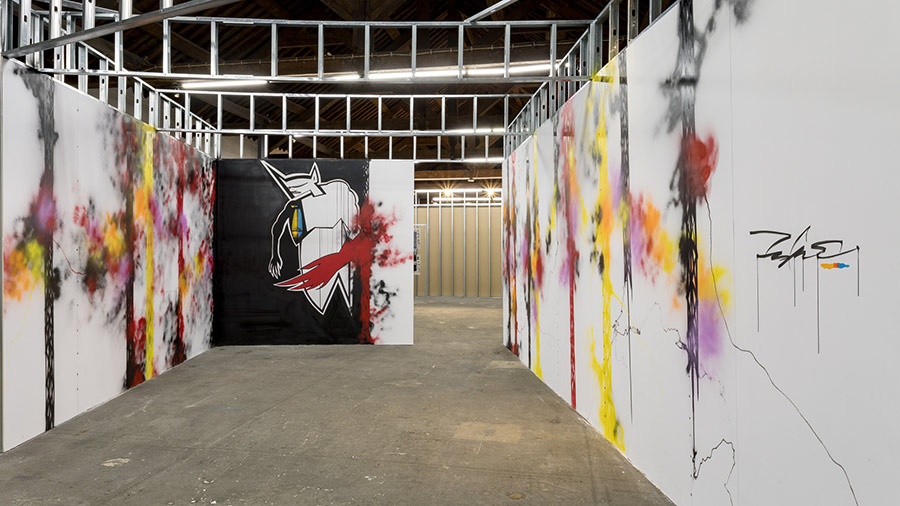
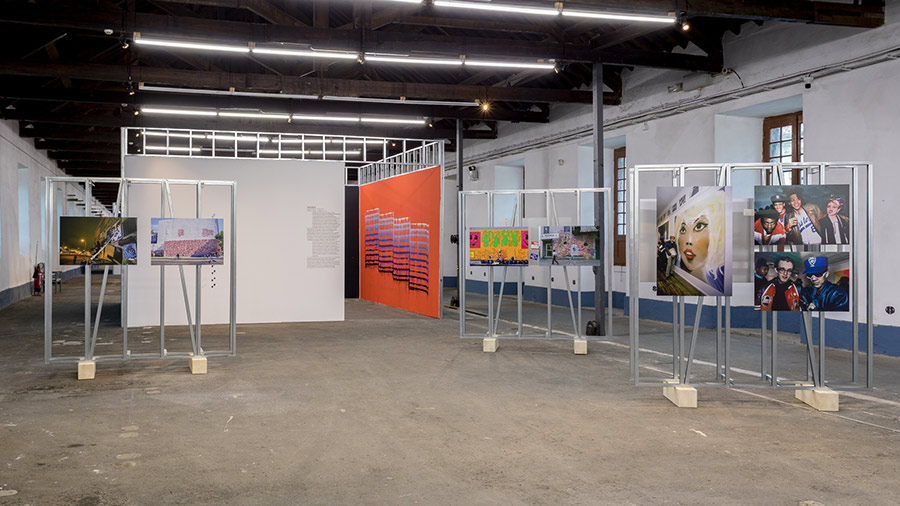
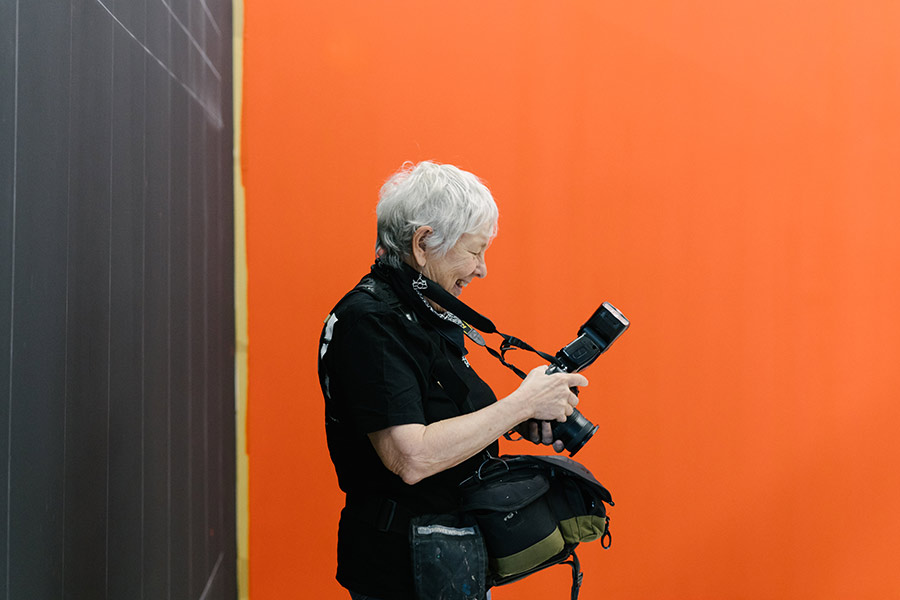
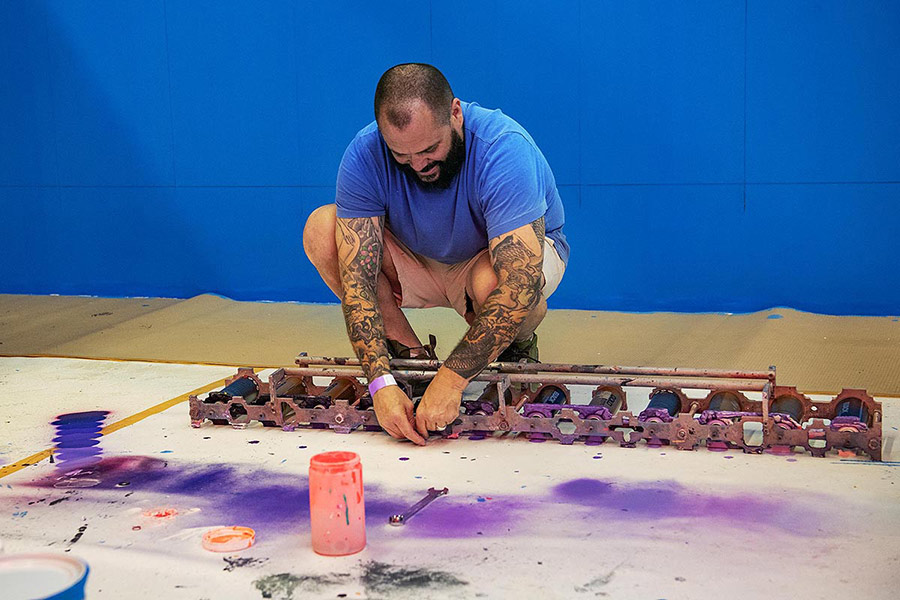
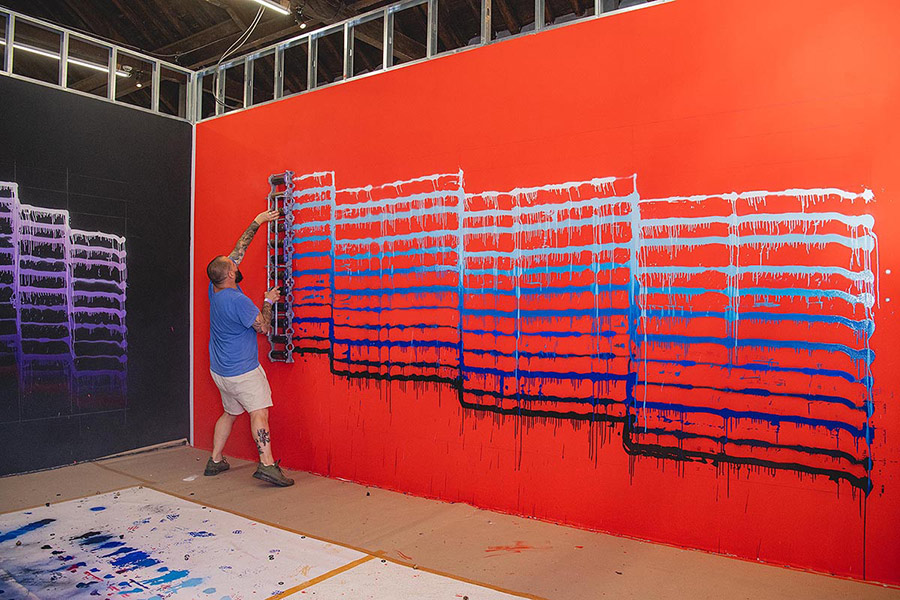
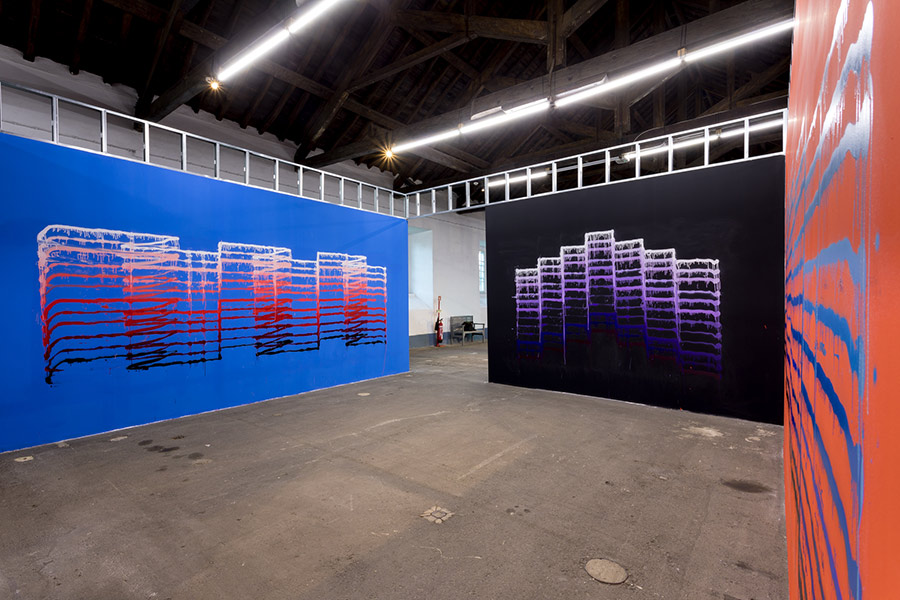
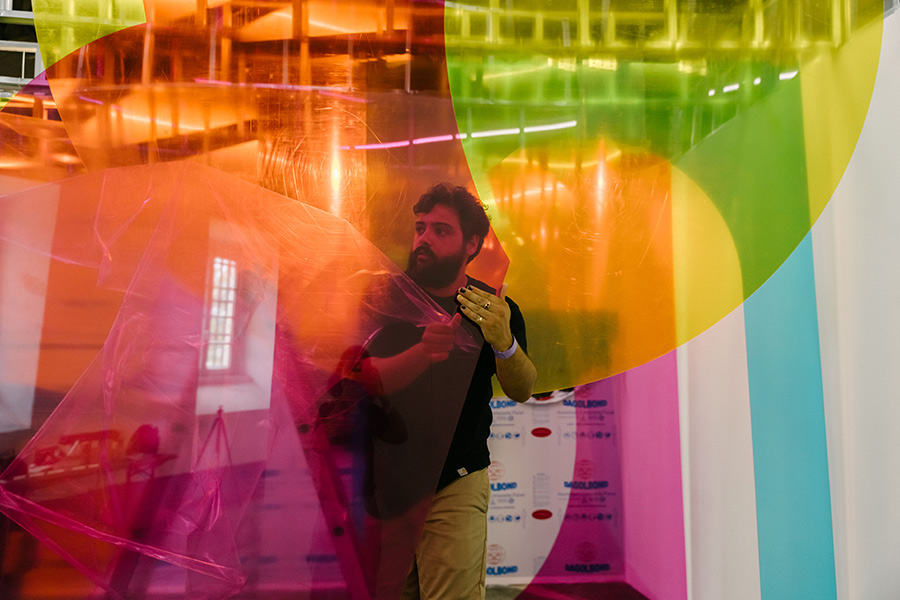
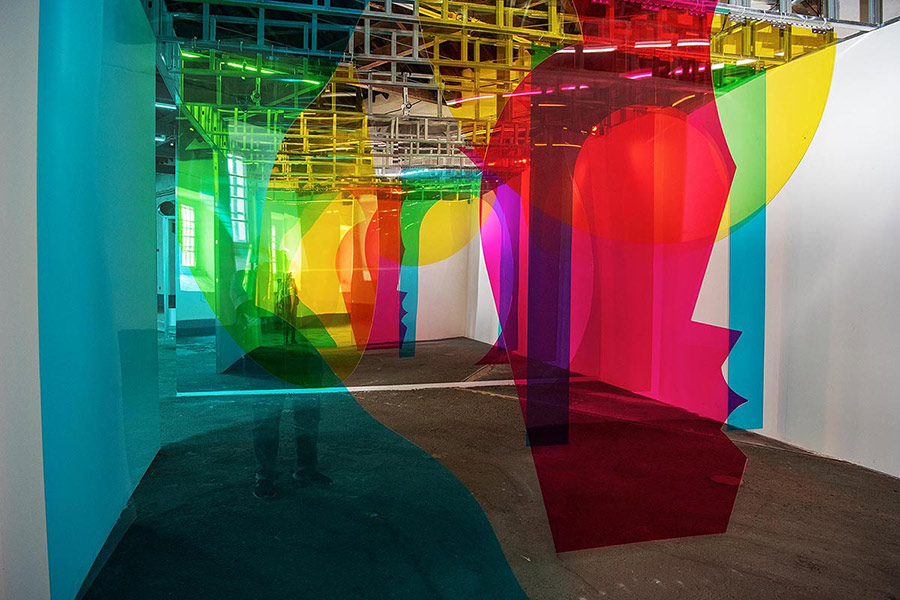
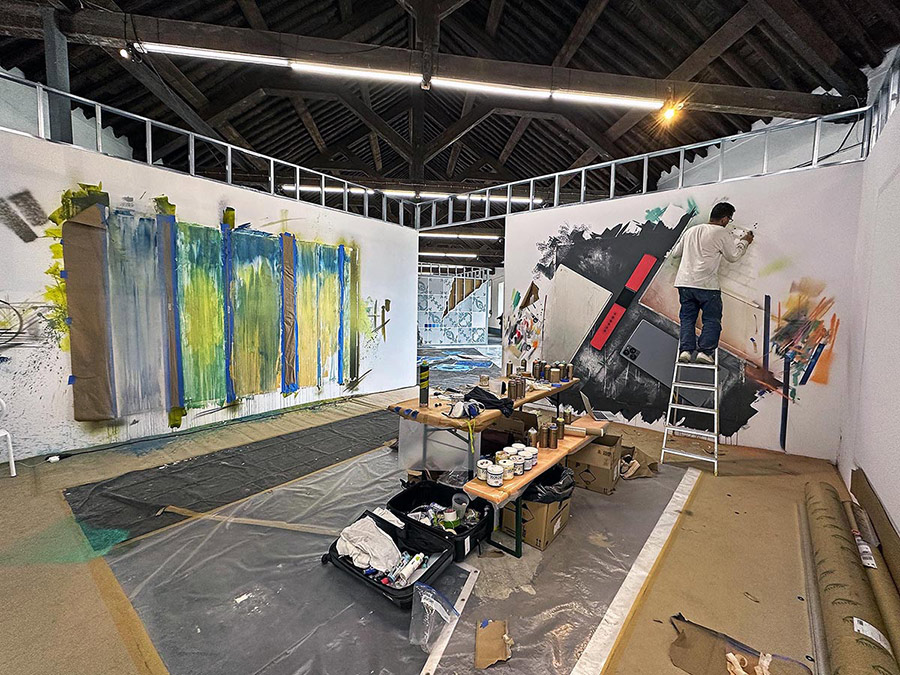
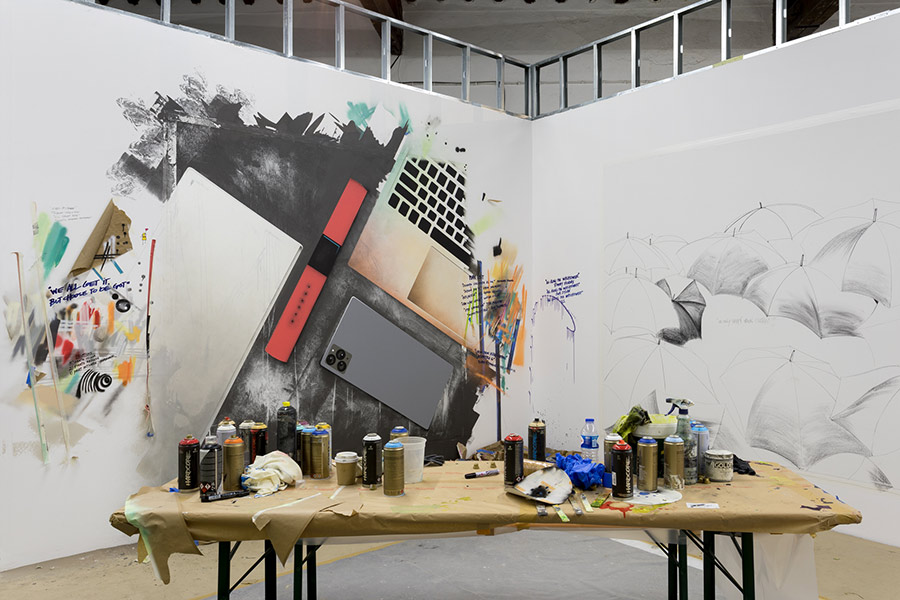
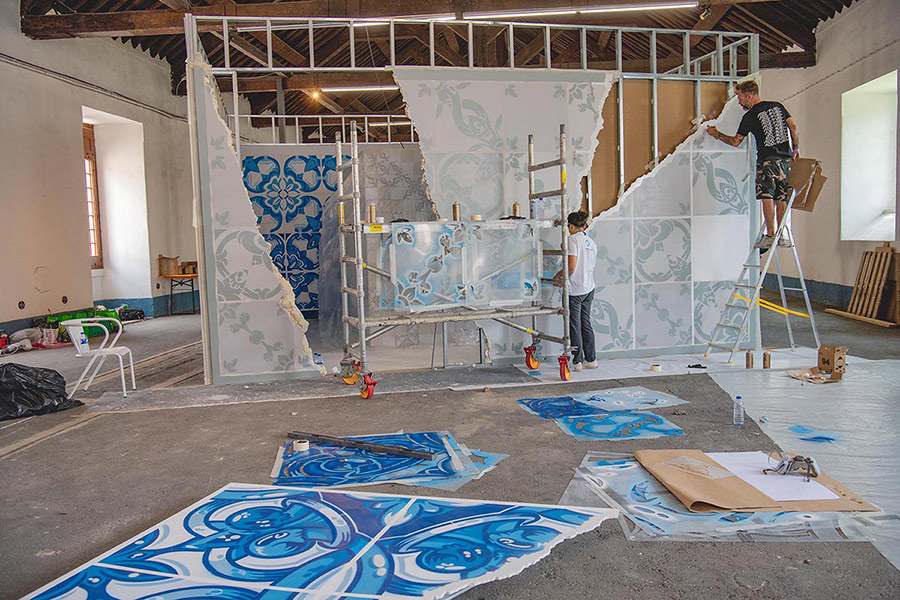
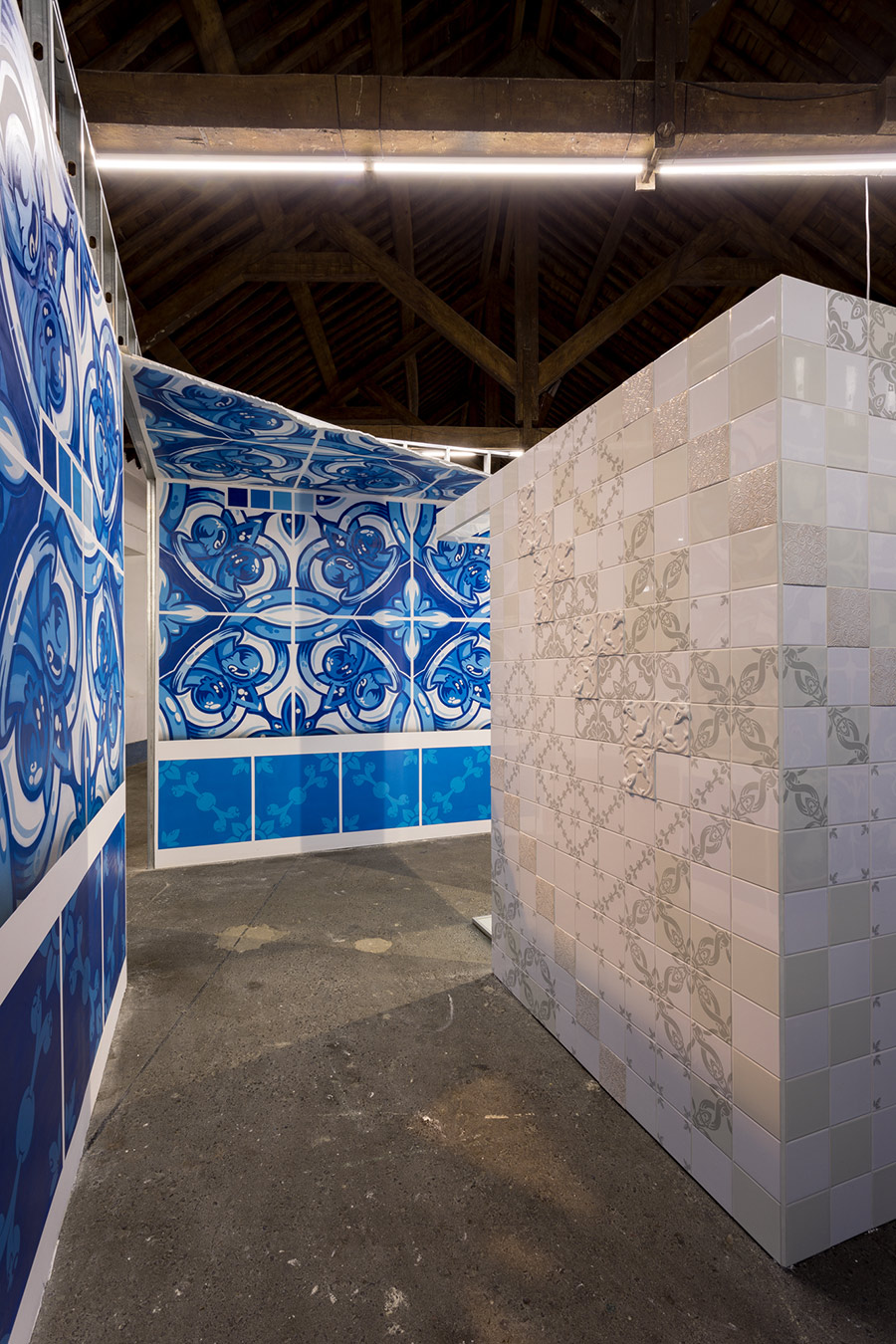
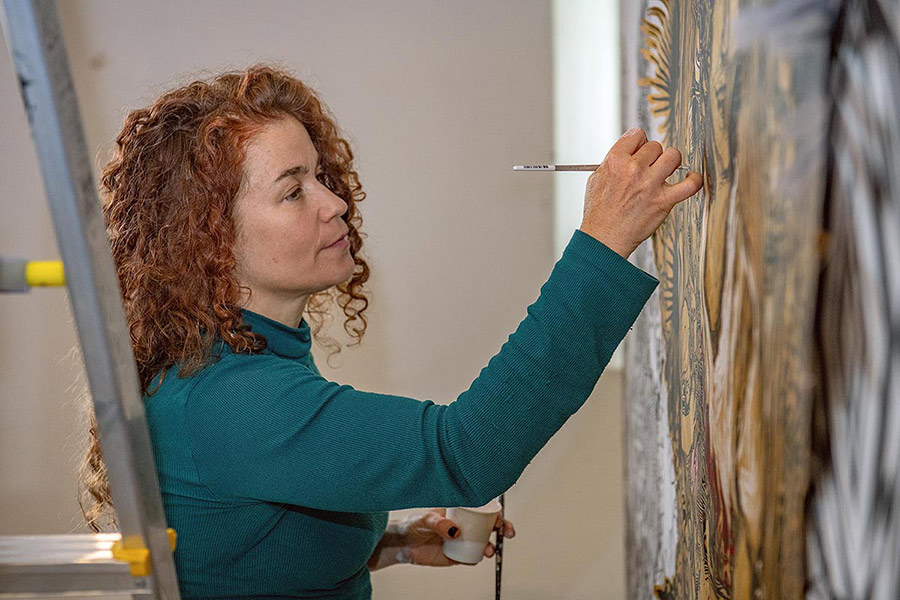
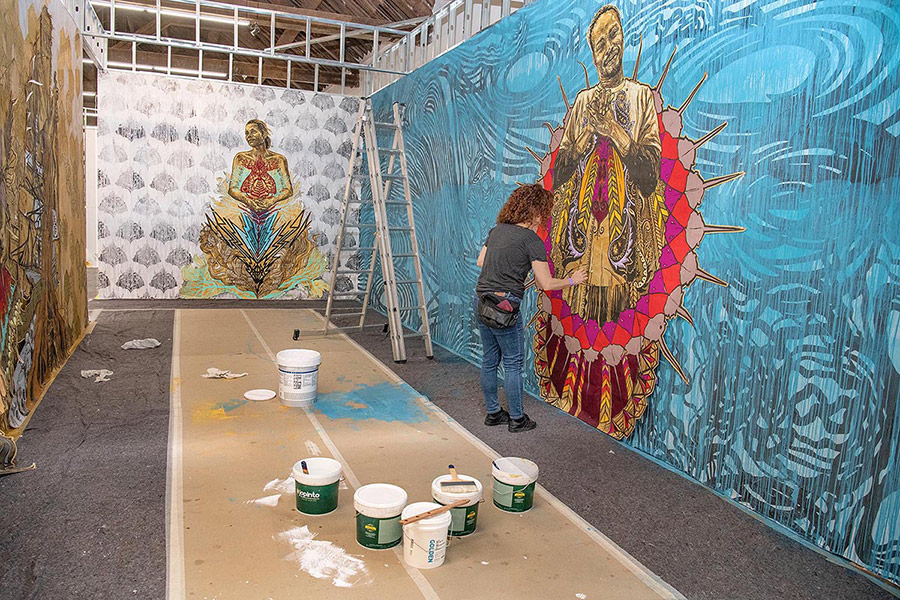
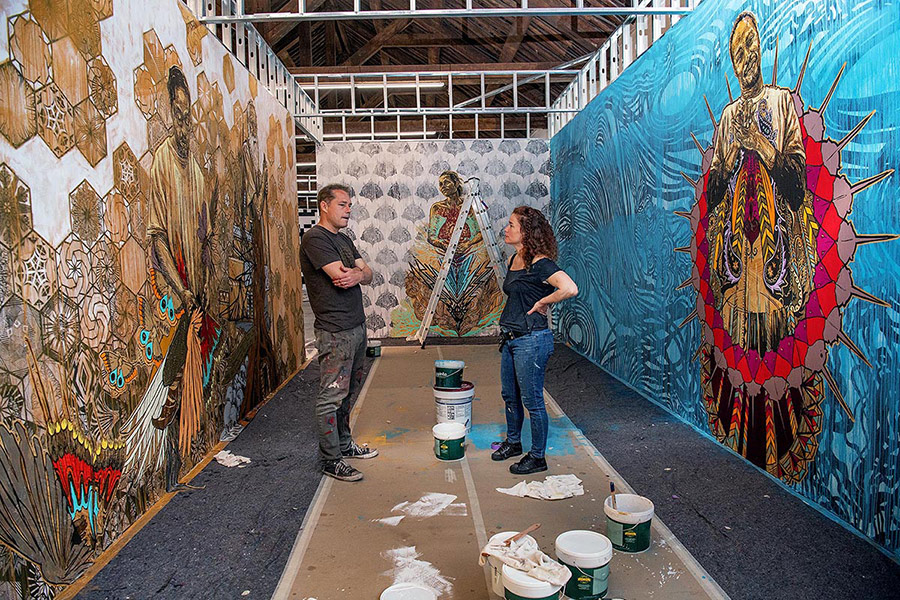
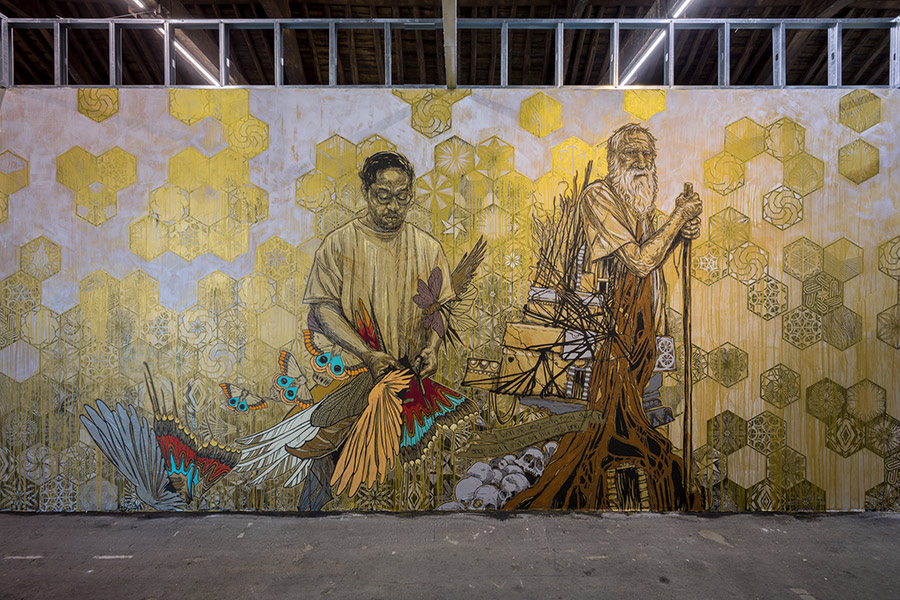
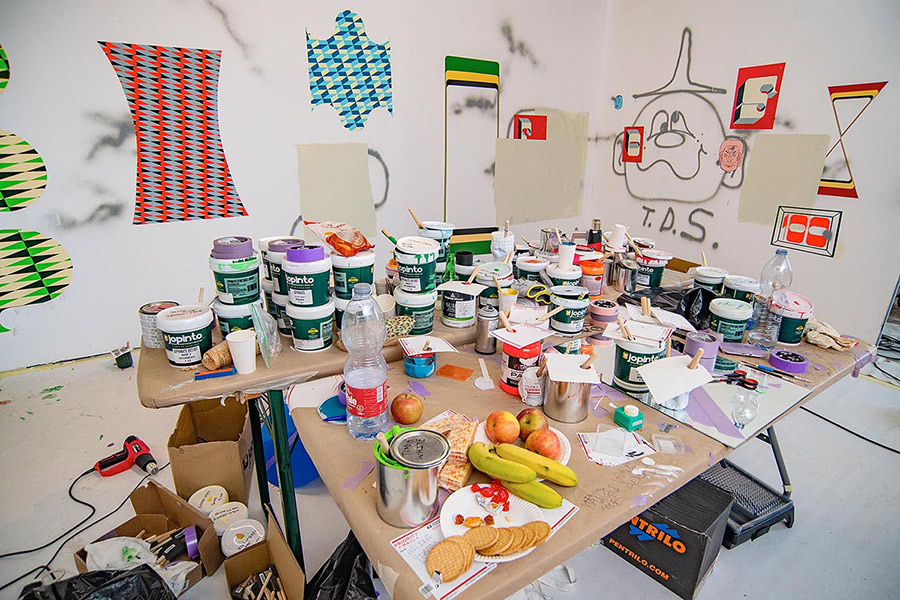
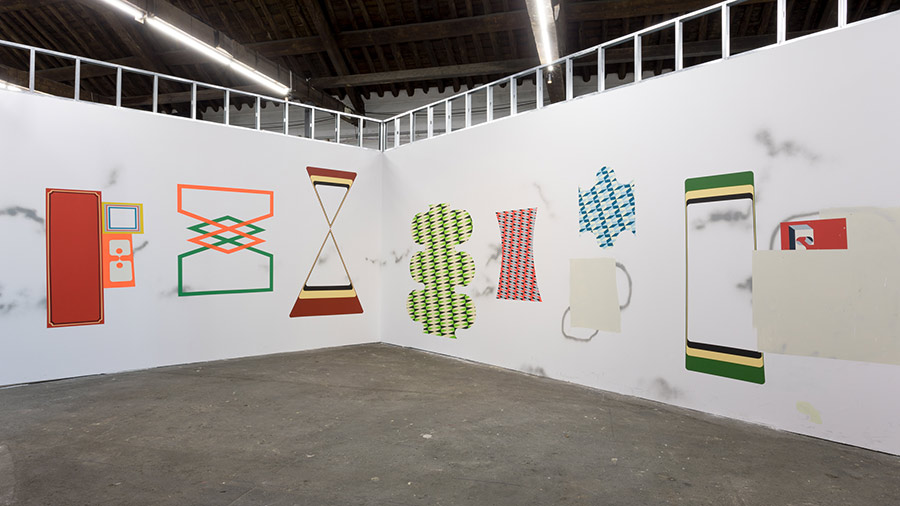
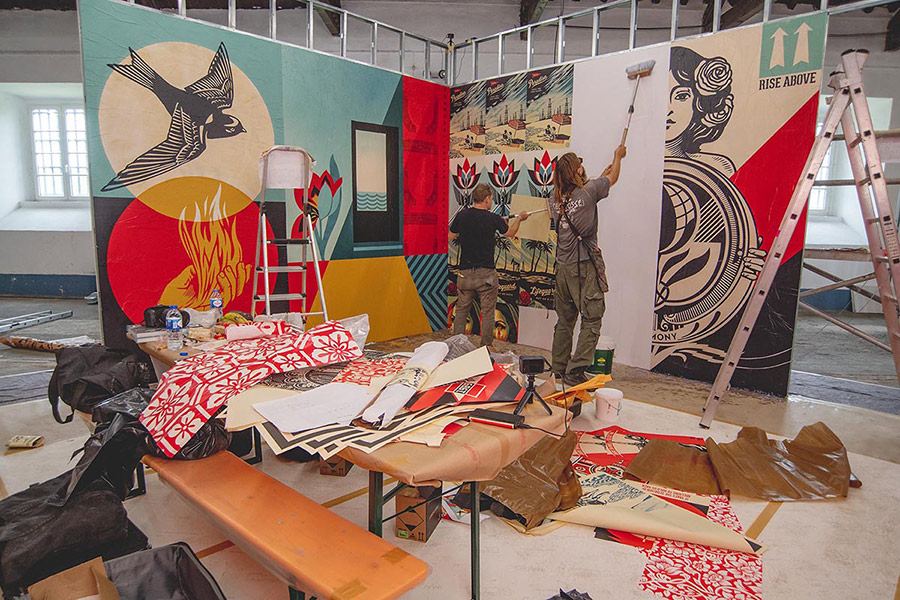
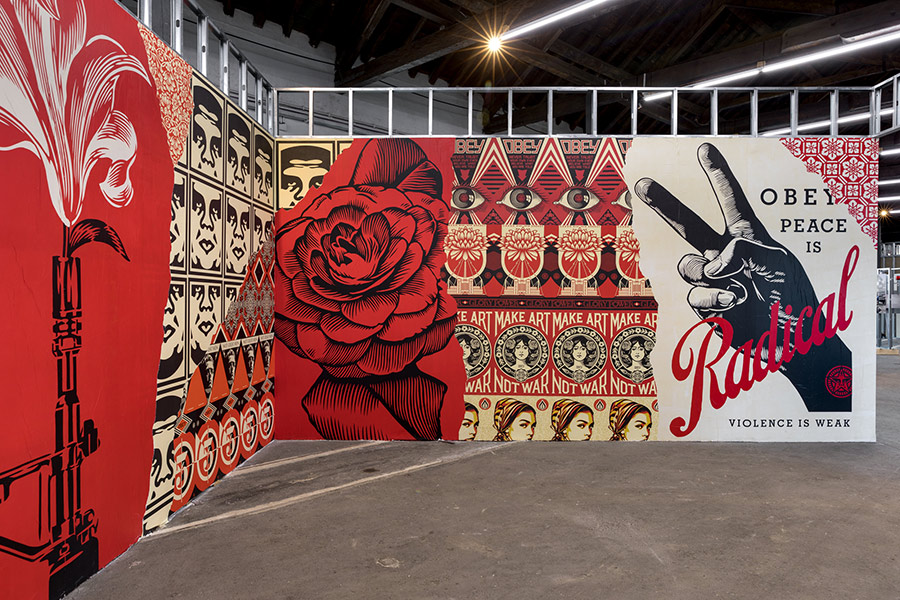
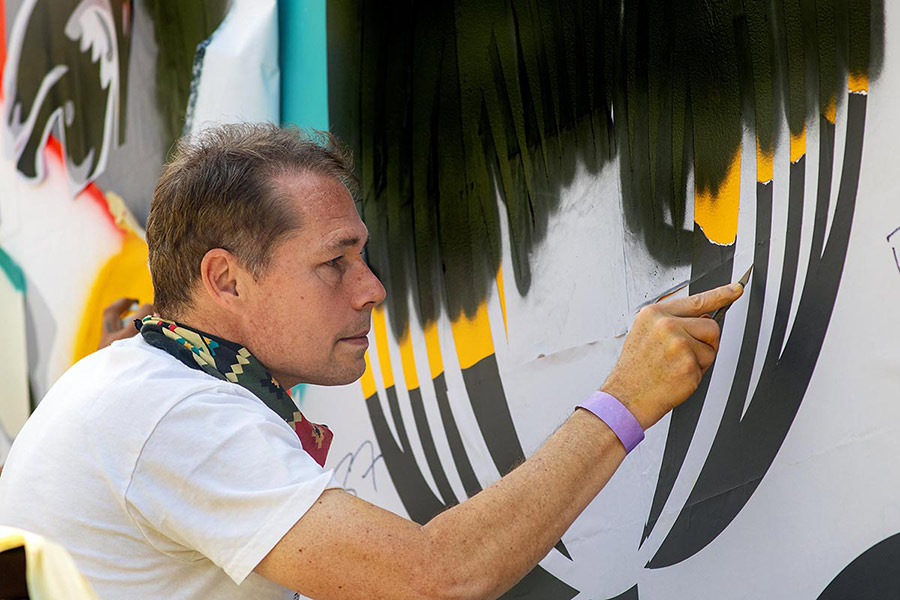
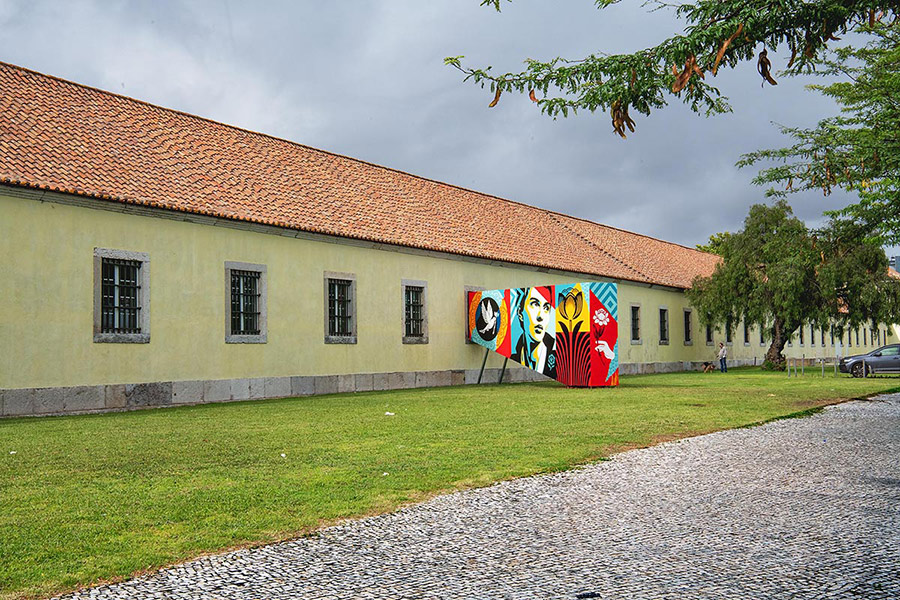
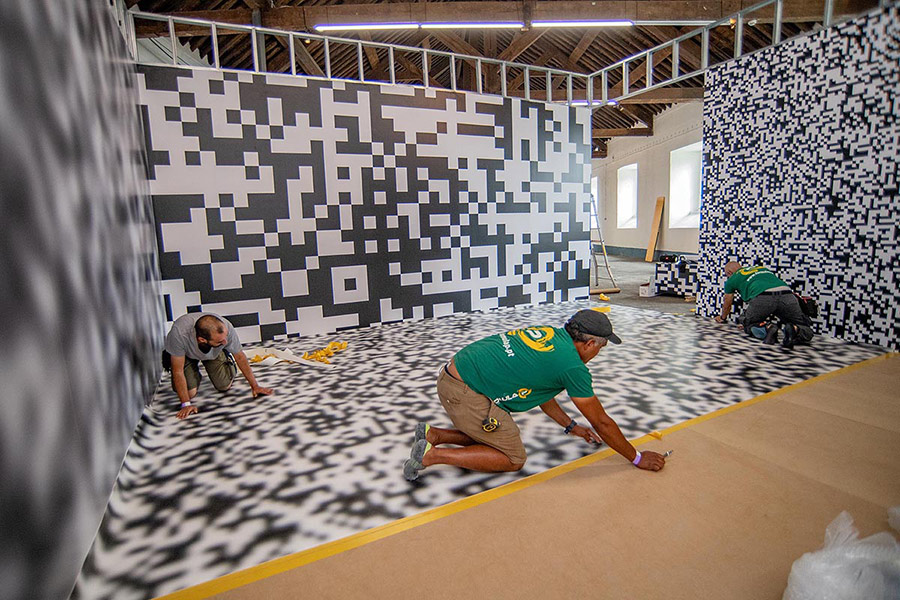
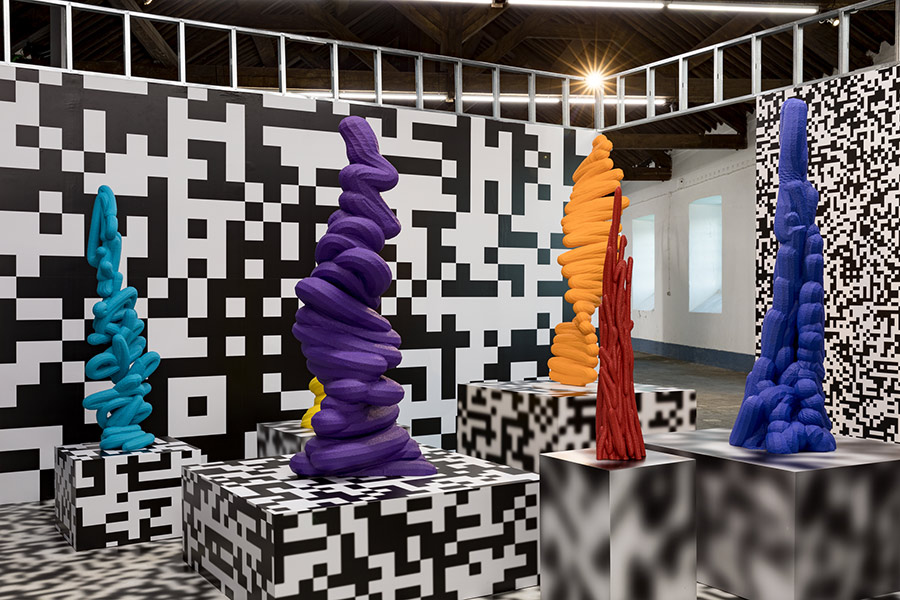
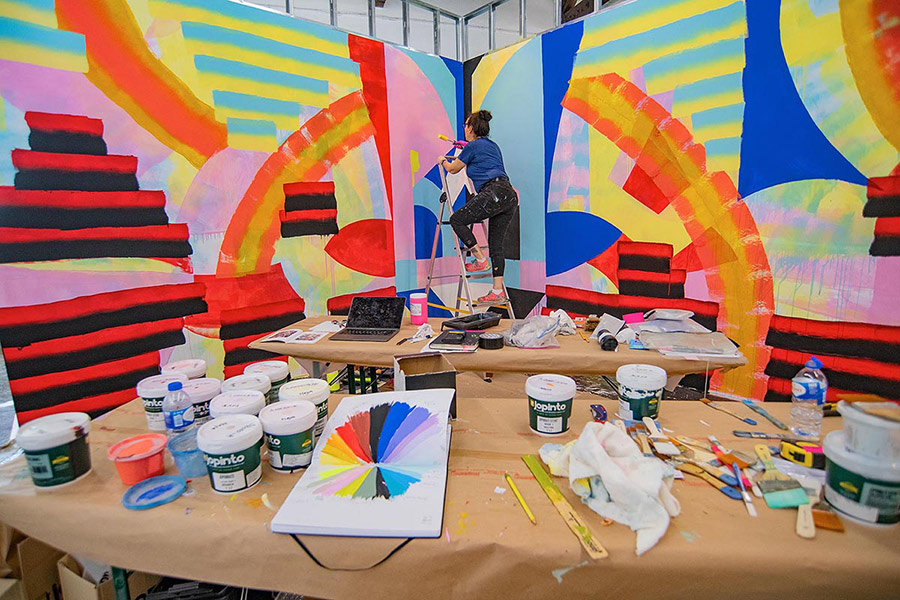
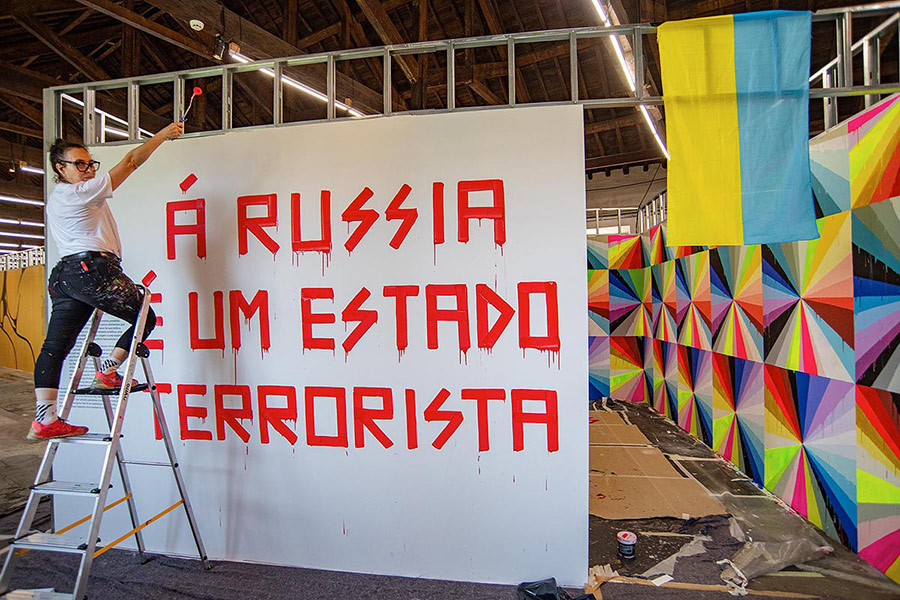
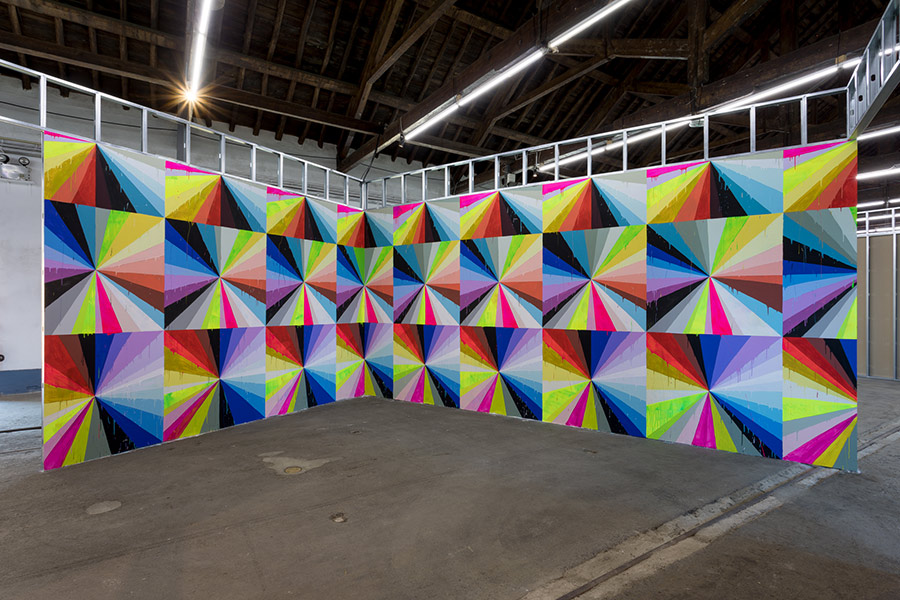
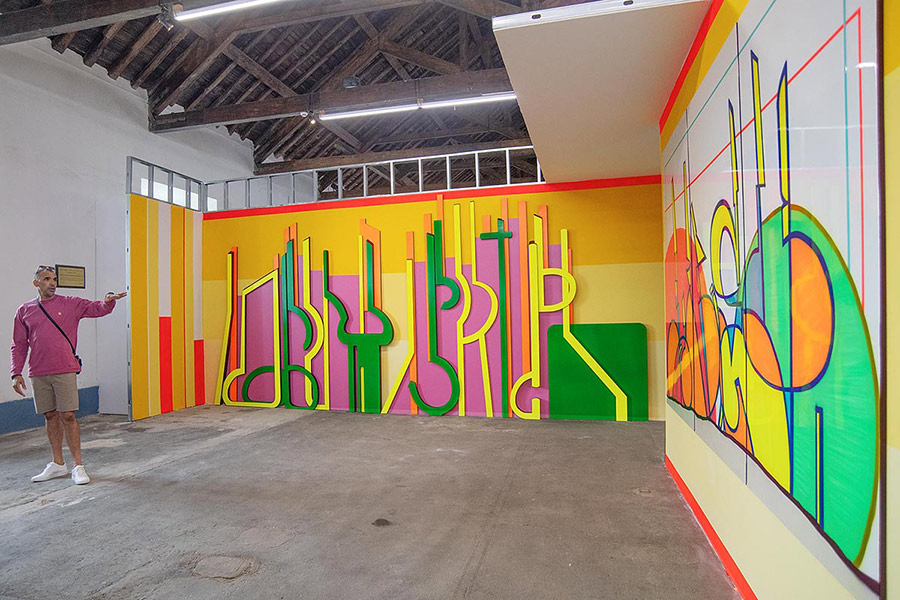
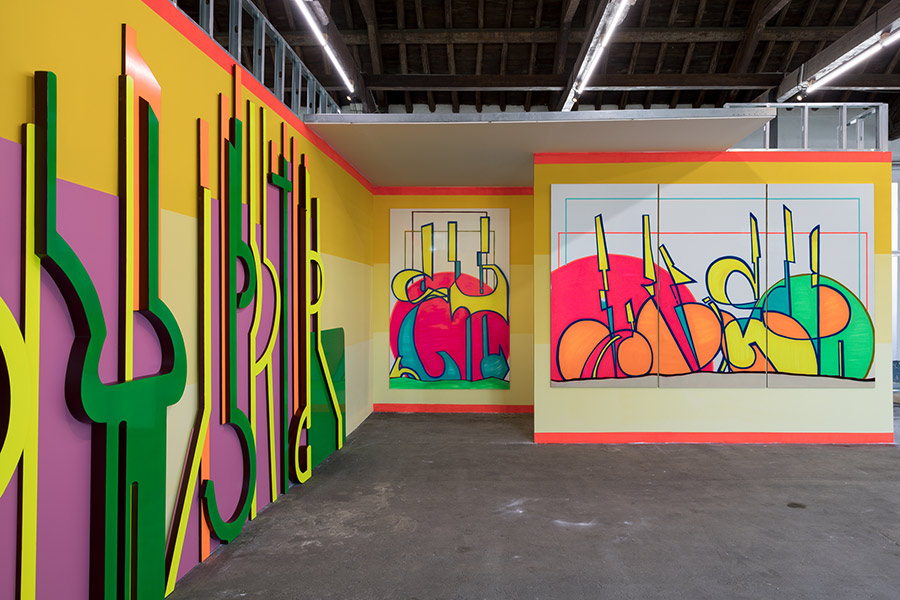
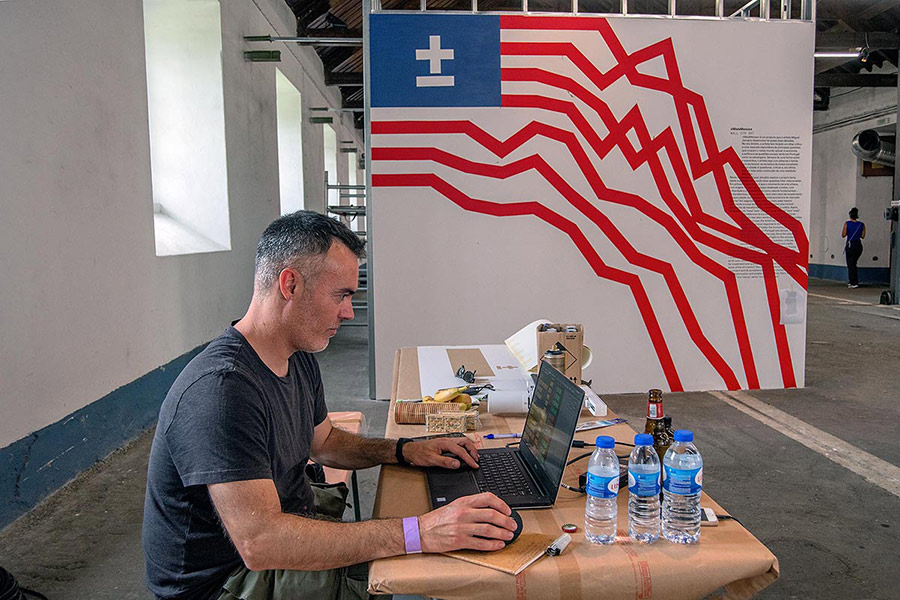
The artist presented a video installation addressing the “market” for graffiti and street art, the intersection with art and commerce in a brilliant display.
“This took me to what is my thesis subject, where my work is the centerpiece of an eventual (or questionable) dichotomy between street art and the art market, the evolution from illegal, interventive and subversive work into a continuous institutionalization, mercantilization and commoditization, normalized with the (before pursued) but now consecrated and valuated (street) artists.
All of this materialized in an art industry (or market) of artist-companies, studios, galleries, festivals, fairs, museums, curators, collectors, political and media attention, touristic tours, financialization, etc, as so it is with the art world as a whole. Being this specific show, for its size, importance, where it is, its public, a realization of this “evolution”, or this stage of the urban arts. So I thought of an installation as a self-critique and self-awareness of this stage and present context of urban art (one of which myself and my work makes part), how capitalism kidnaps, agglutinates and transforms its (possible) critique and counter-culture, commodifying, massifying and selling it.”
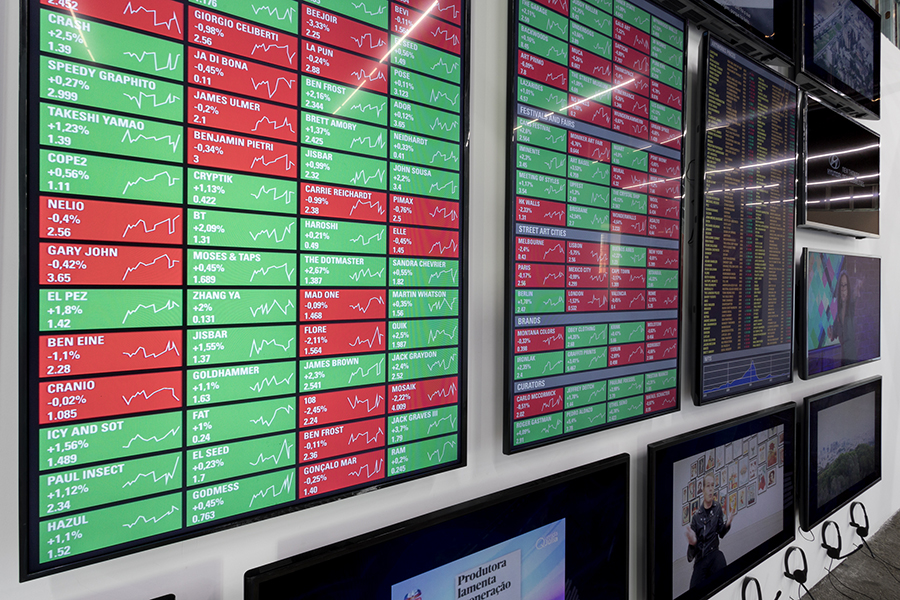
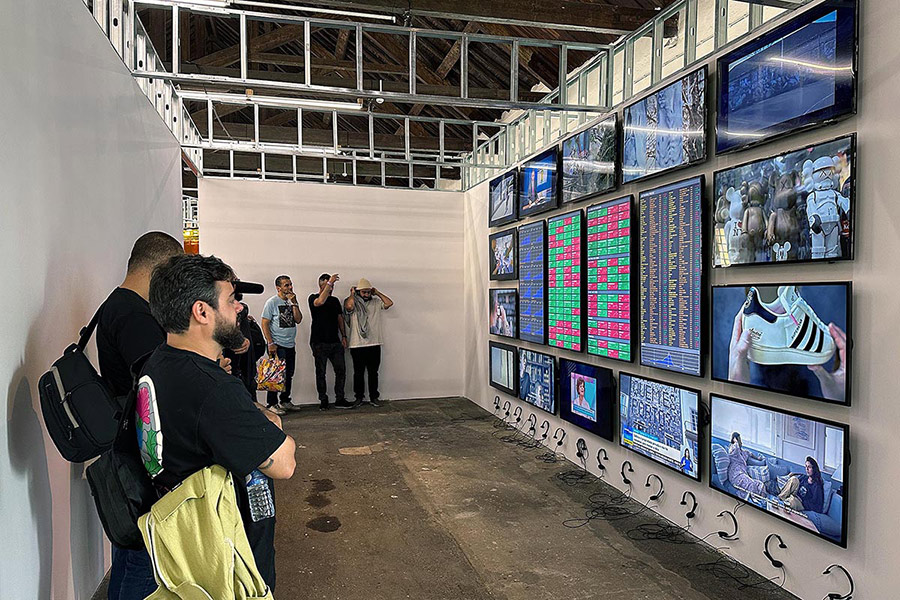
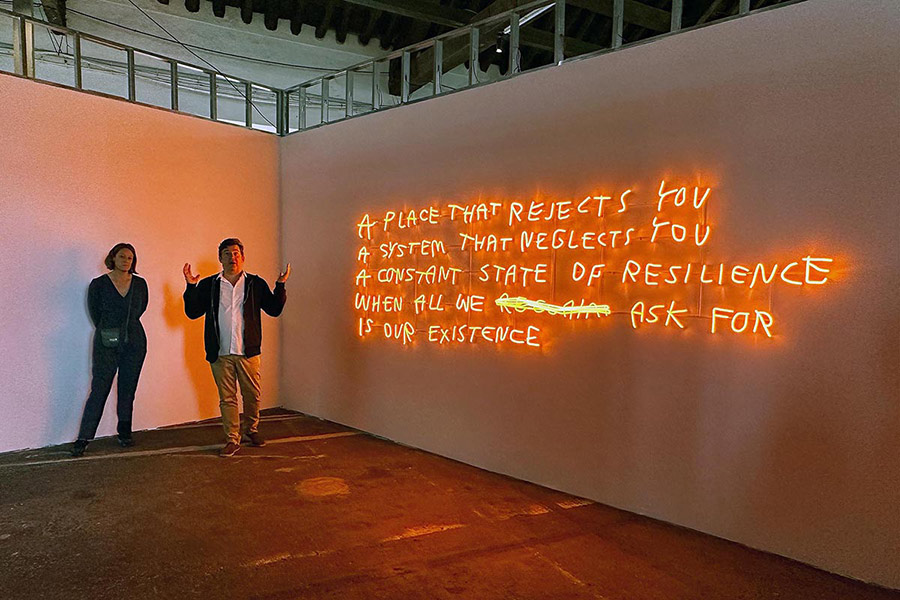
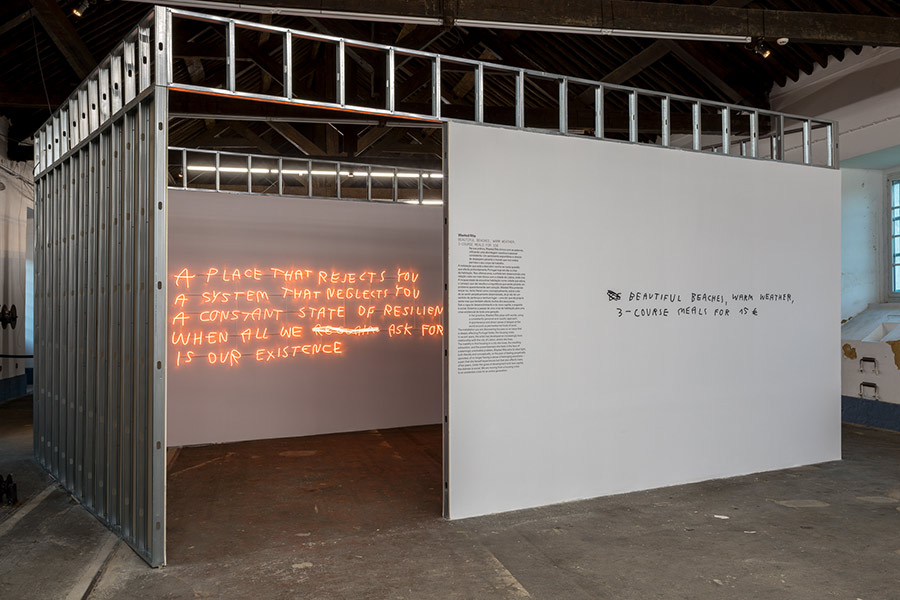
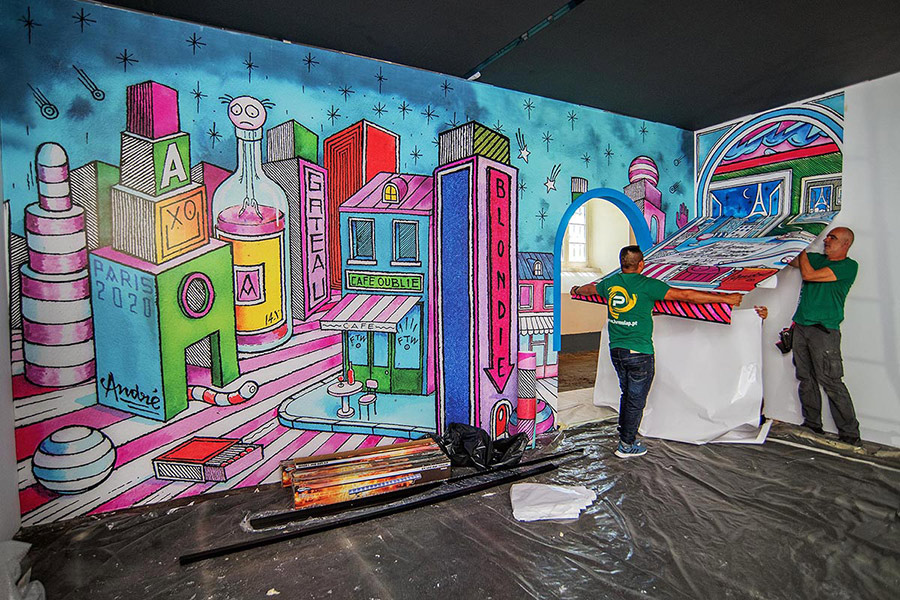
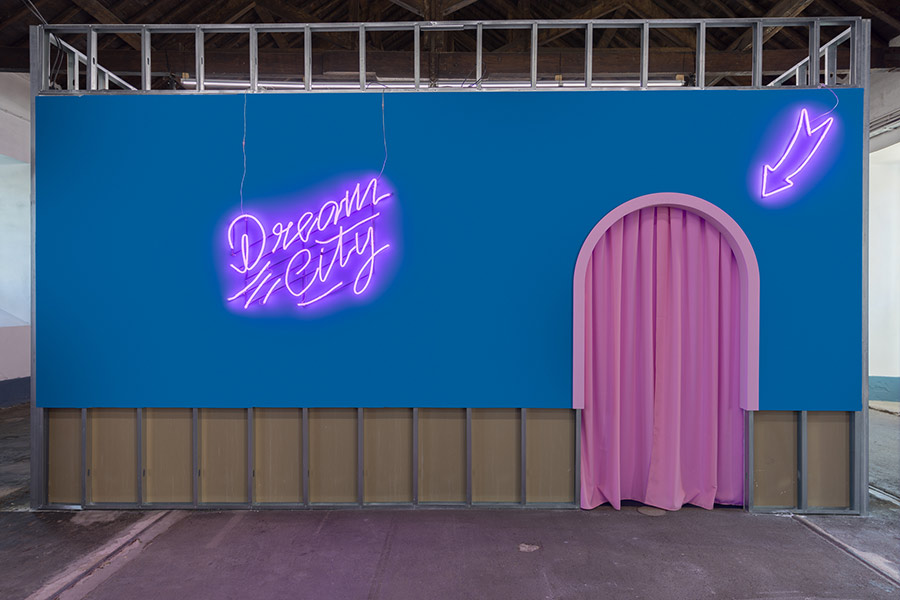
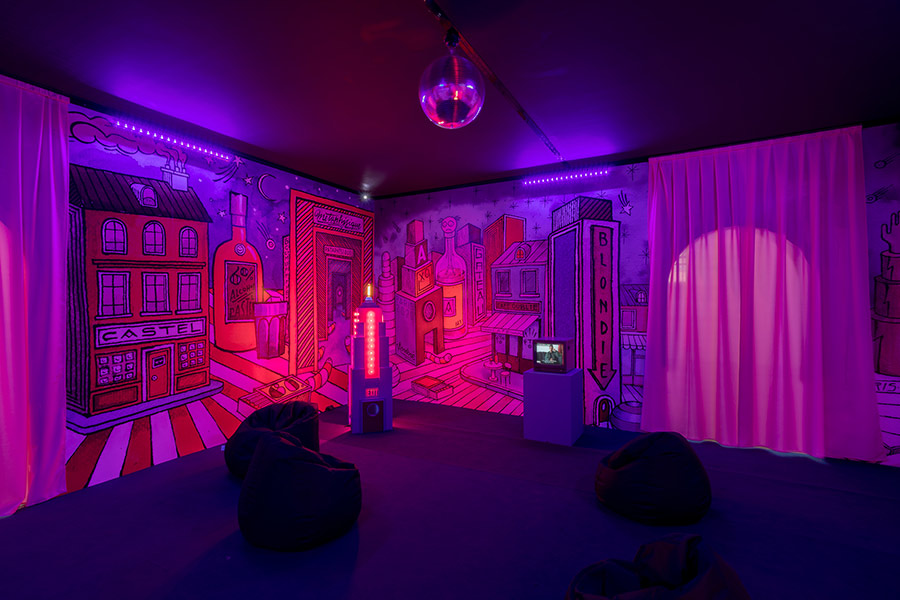
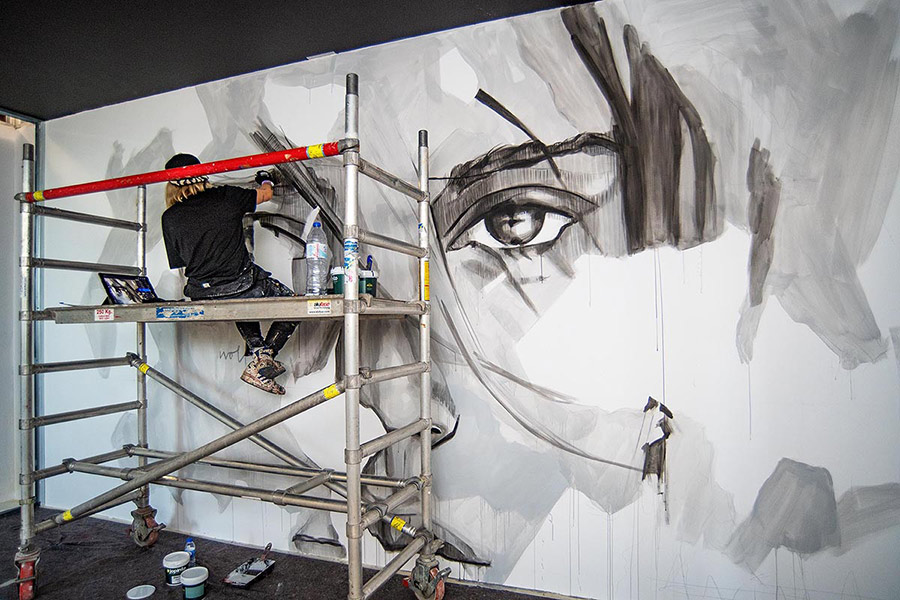
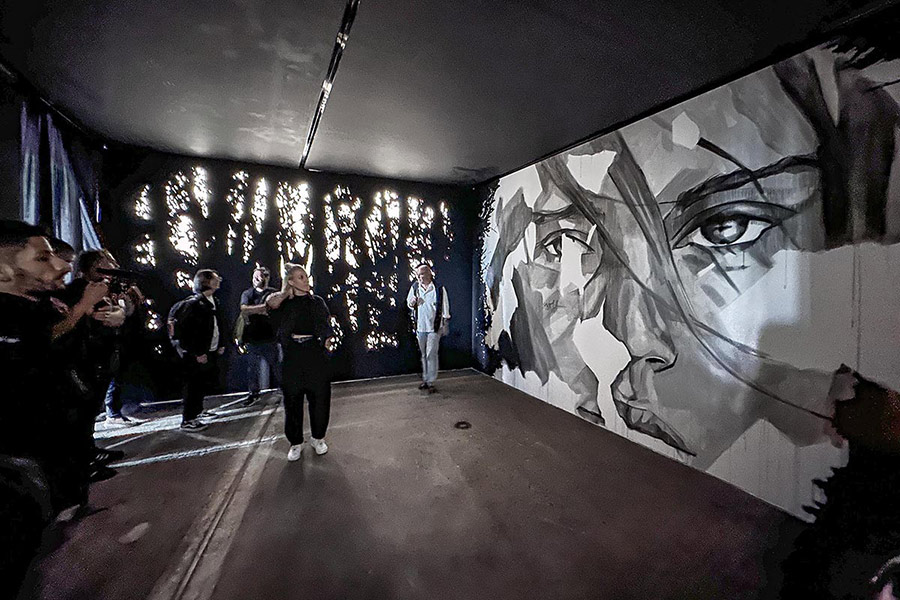
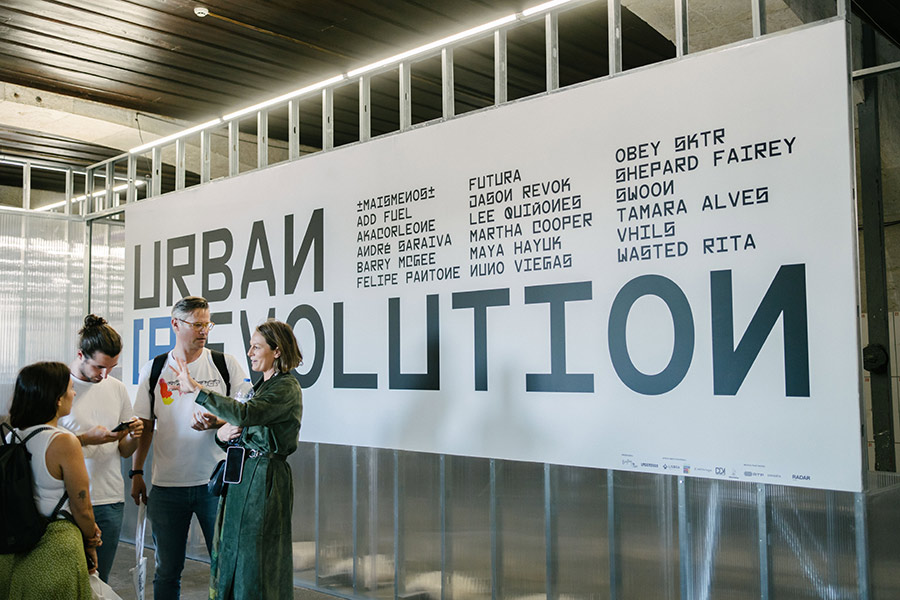
Artists include @maismenos [PT]; @addfuel [EN]; @akacorleone [PT]; @andresaraiva [SE-FR]; Barry McGee [US]; @felipepantone [AR-ES]; @futuradosmil [US]; @_revok_ [US]; @leequinones [PR-US]; @marthacoopergram [US]; @mayahayuk [US]; @nunoviegas.pt [PT]; @obey_sktr [PT]; @obeygiant [US]; @swoonhq [US]; @tamara_aalves [PT]; @vhils [PT]; @wastedrita [PT]
 BROOKLYN STREET ART LOVES YOU MORE EVERY DAY
BROOKLYN STREET ART LOVES YOU MORE EVERY DAY